National Liberation Front, 85th Birthday of Ho Chi Minh, Michel Nr. NLF 52-54; Four stamps in the nominals 5D (issued May 8th, 1975), 10D (issued May 7th, 1975,) 30D magenta red frame (issued May 19th, 1975) and 30D brown olive frame (issued July 16th, 1975).
Here is the mint set.
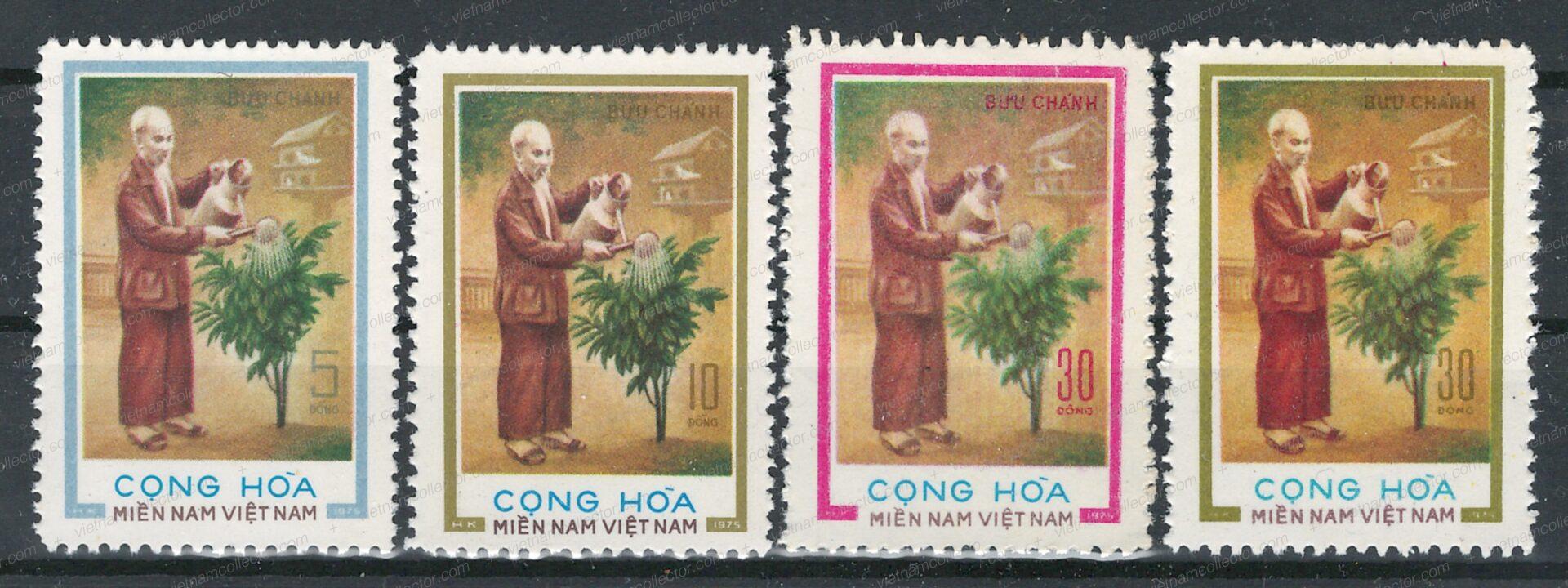
Mint blocks of four.
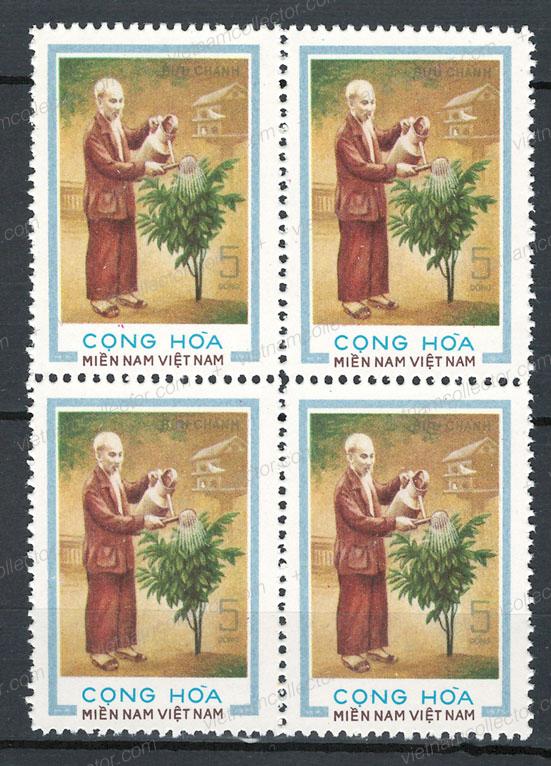
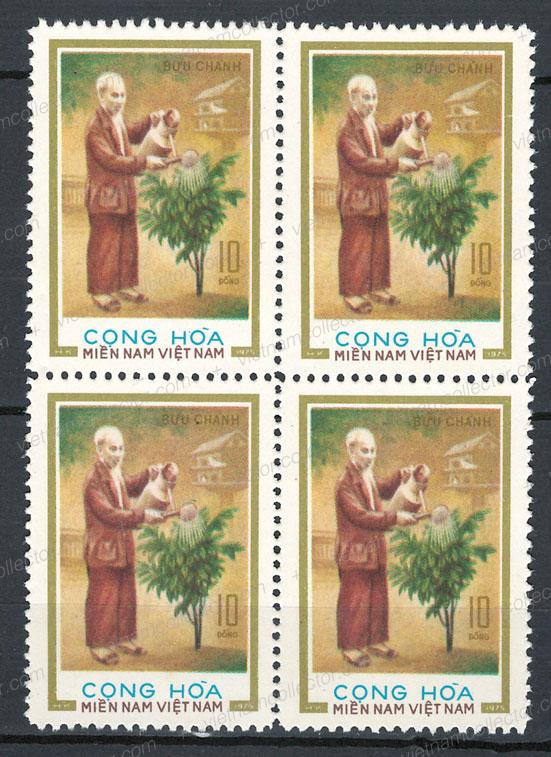
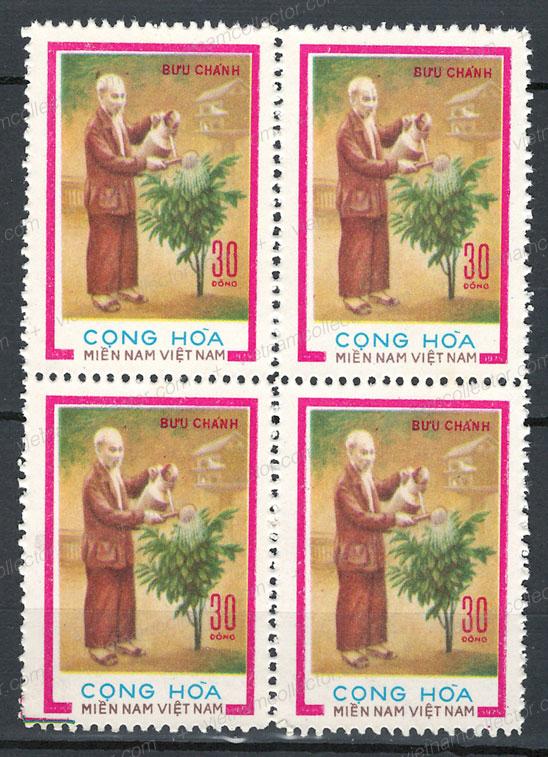
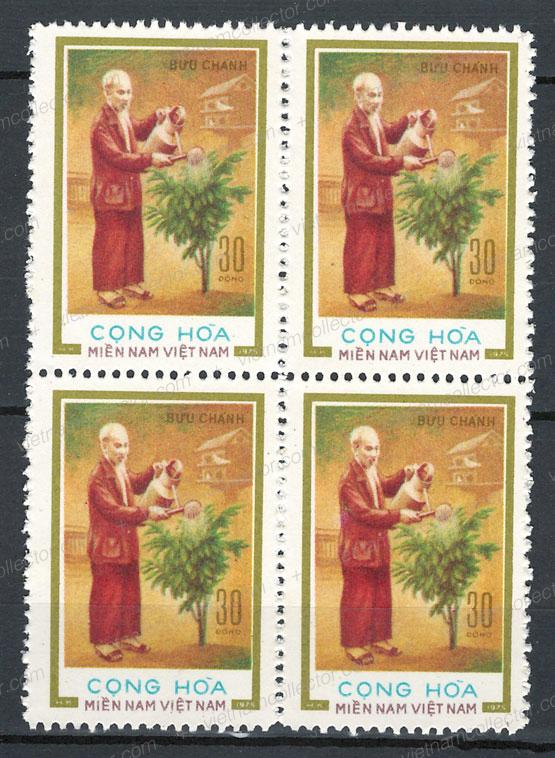
Here is the mostly cancelled to order set.
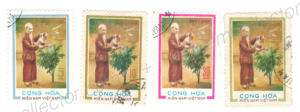
Printing errors are known to exist. Here is a mint specimen of the 30xu stamp with the brown olive frame missing all of the light brown color resulting in the country name missing.
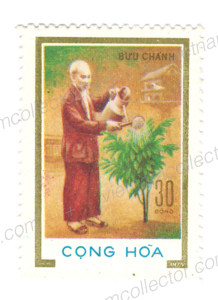
Here is a printing error on the 30xu stamp with the olive-brown frame on which the entire yellow printing run is missing.
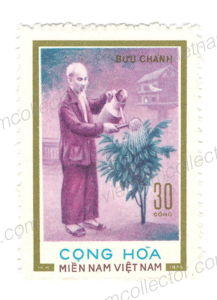
Here is a printing error on the 30xu stamp with the olive-brown color printing run missing resulting in the stamp being without a frame.
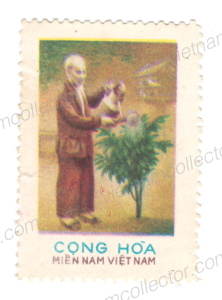
Perforation errors are also known. Here is a mint 30xu stamp with the olive-brown frame that is imperforate on top.
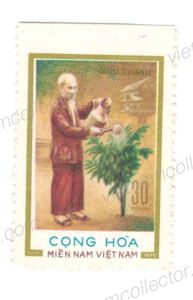
After the fall of Saigon on April 30th, 1975 the post office was closed for a number of days in order to allow the new administration to set up. The post office in Saigon reopened officially on May 7th, 1975, the day when the 10D and 20D Ho Chi Minh among solider set was released. Given that most South Vietnamese were laying low, not knowing what to expect from the new Government, very few letters were actually processed on that day. However, the next day philatelist did show up at the post office to get some blank envelopes cancelled with NLF stamps. Here is an envelope that features a number of NLF stamps cancelled with the new “M.N.” Saigon cancel.
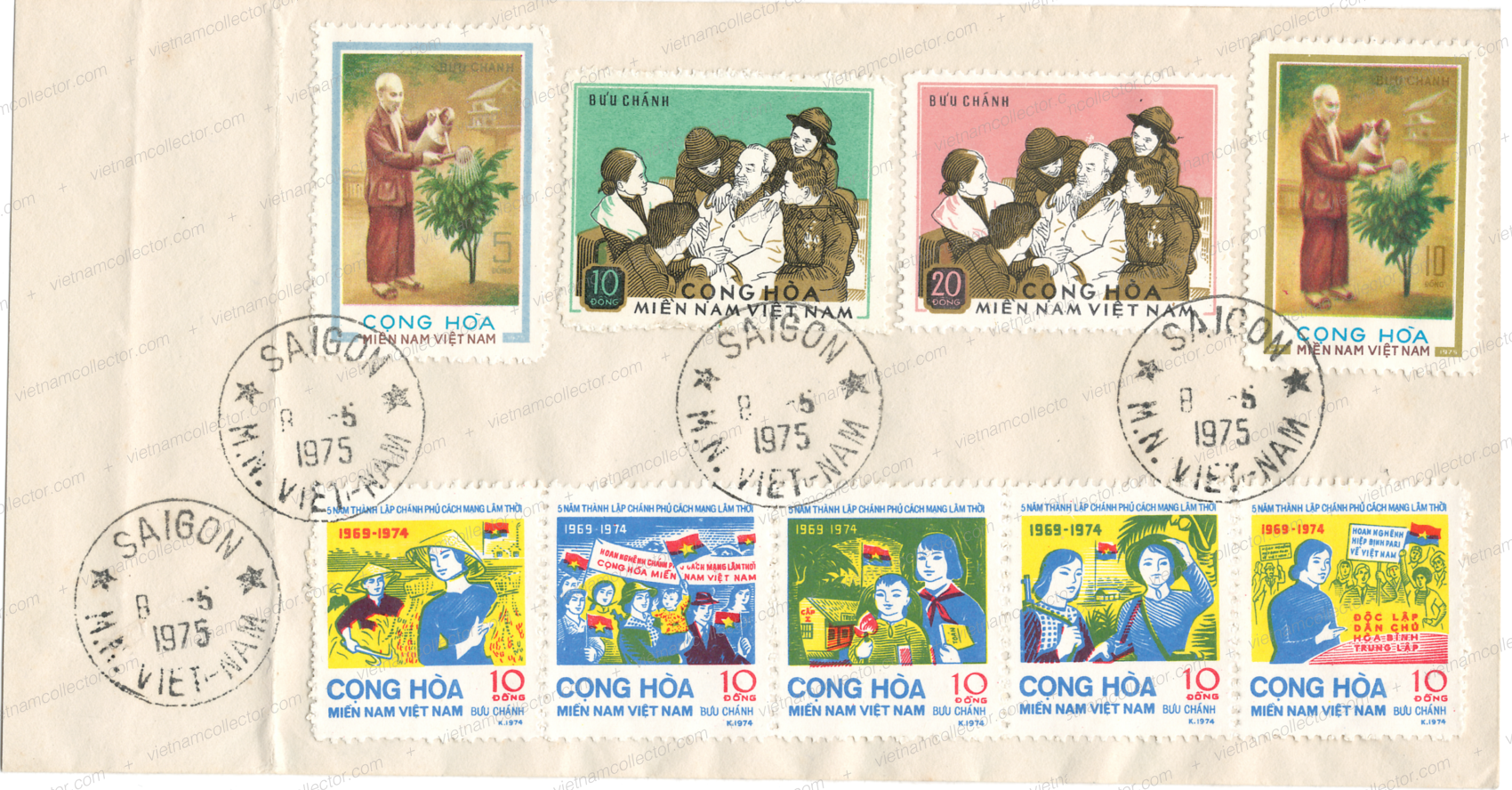
The 5D HCM with tree stamp was released on May 8th, 1975, the second day after the Saigon most office reopened after the end of the war. Here is a First Day Cover.
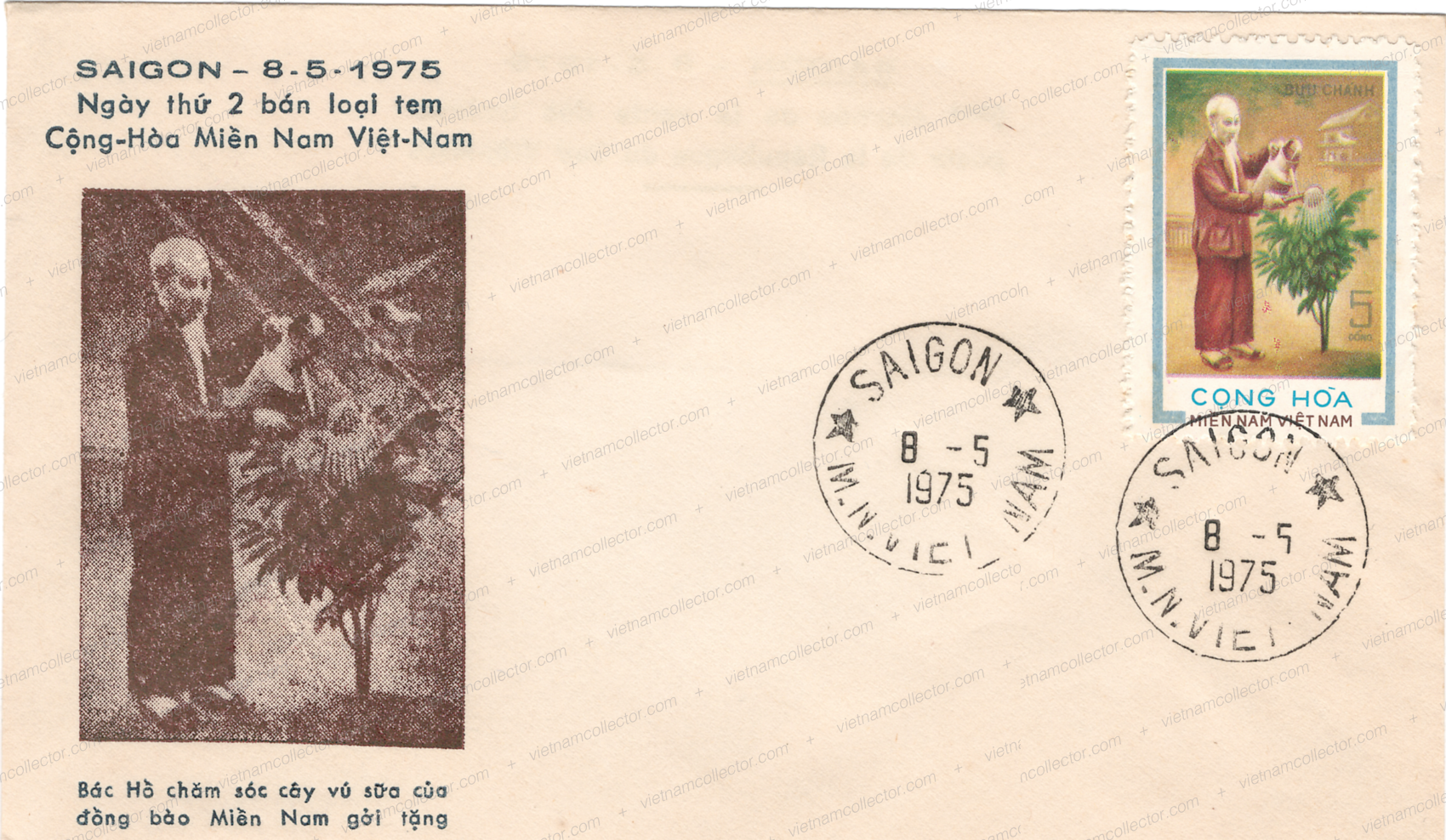
Both, the Vietnamese Postage Stamp Catalogue and Michel state the first day of issuance of the 30D stamp wit the red frame as May 19th, 1975 and not June 6th, 1975. So, this cover that purports to be a First Day Cover is probably a forgery. Note that the “fake” first date is even printed on the front and reverse of the cover!

The 30D stamp with the brown-olive frame was issued on July 16th, 1975. Here is the First Day Cover.
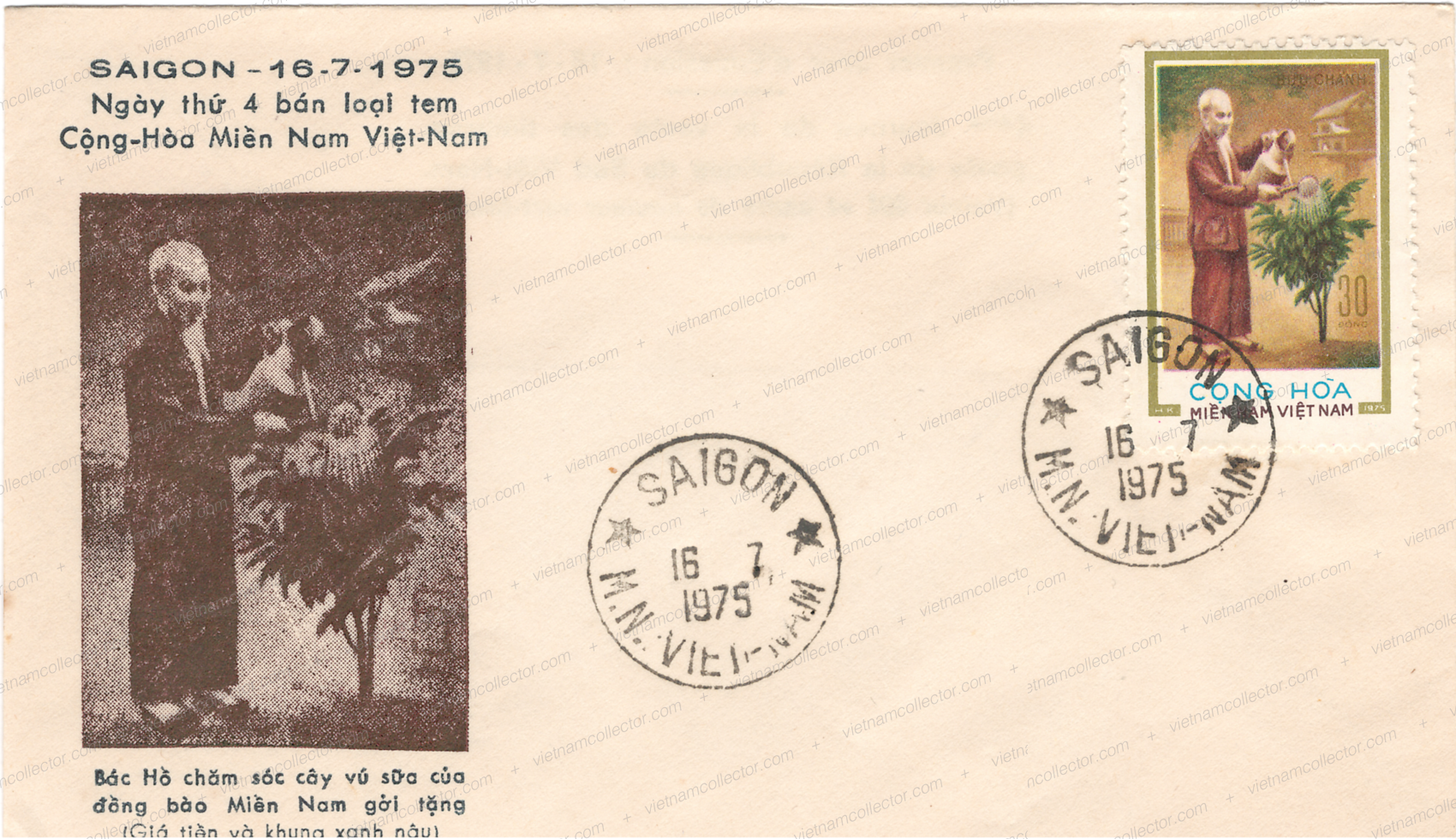
On occasion of Ho Chi Minh’s 85th Birthday (May 19th, 1975) a special memorial cancel was used to cancel NLF stamps that had been issued prior to this date.
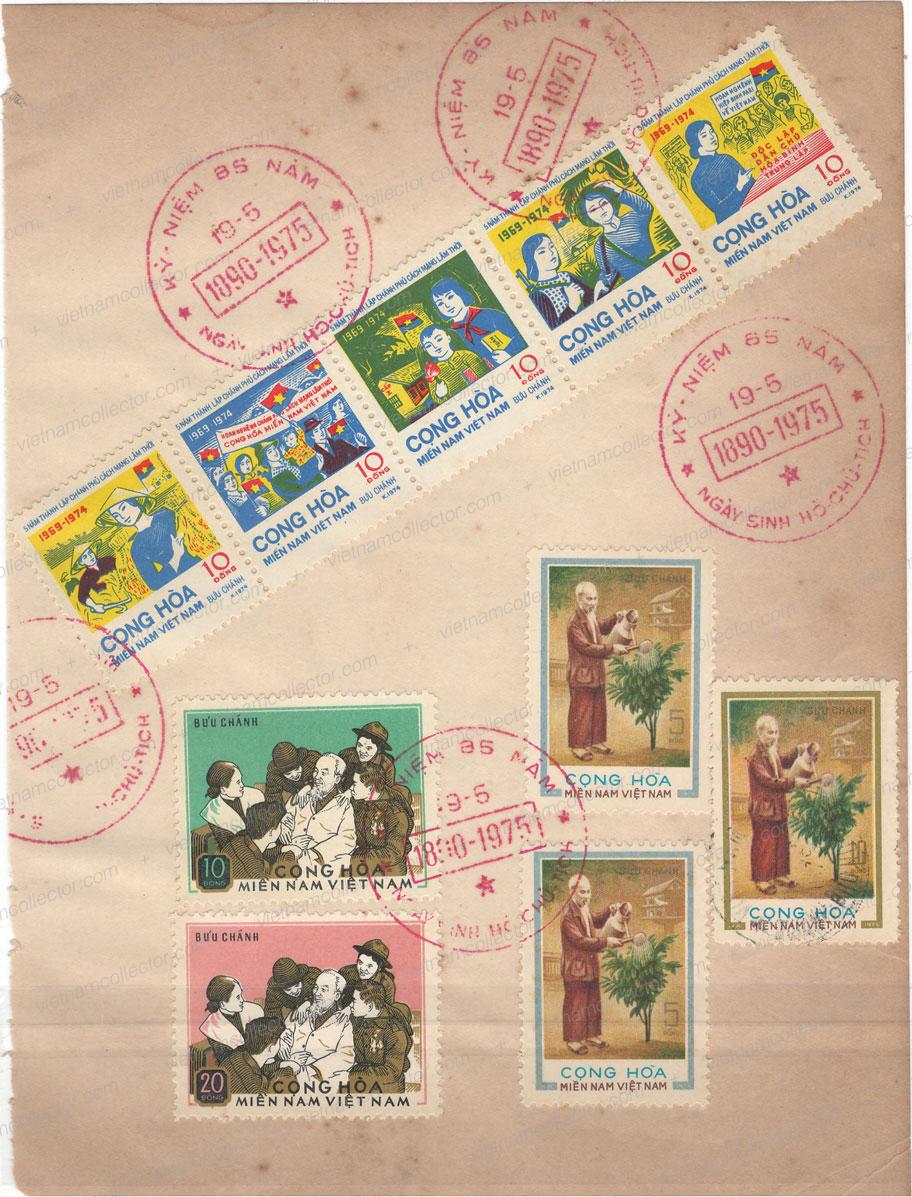
Interesting mixed currency franking of four stamps in the NLF Dong (620D) together with three stamps in unified currency (36xu). The NLF Dong was devalued by 500:1 on April 1st, 1976 which meant the two stamps in old currency were only worth 1.24D in new currency at the time of mailing. Together with the 36xu stamps in new currency the overall postage hence amounted to 1.60D on this letters ent to Australia in July of 1976.
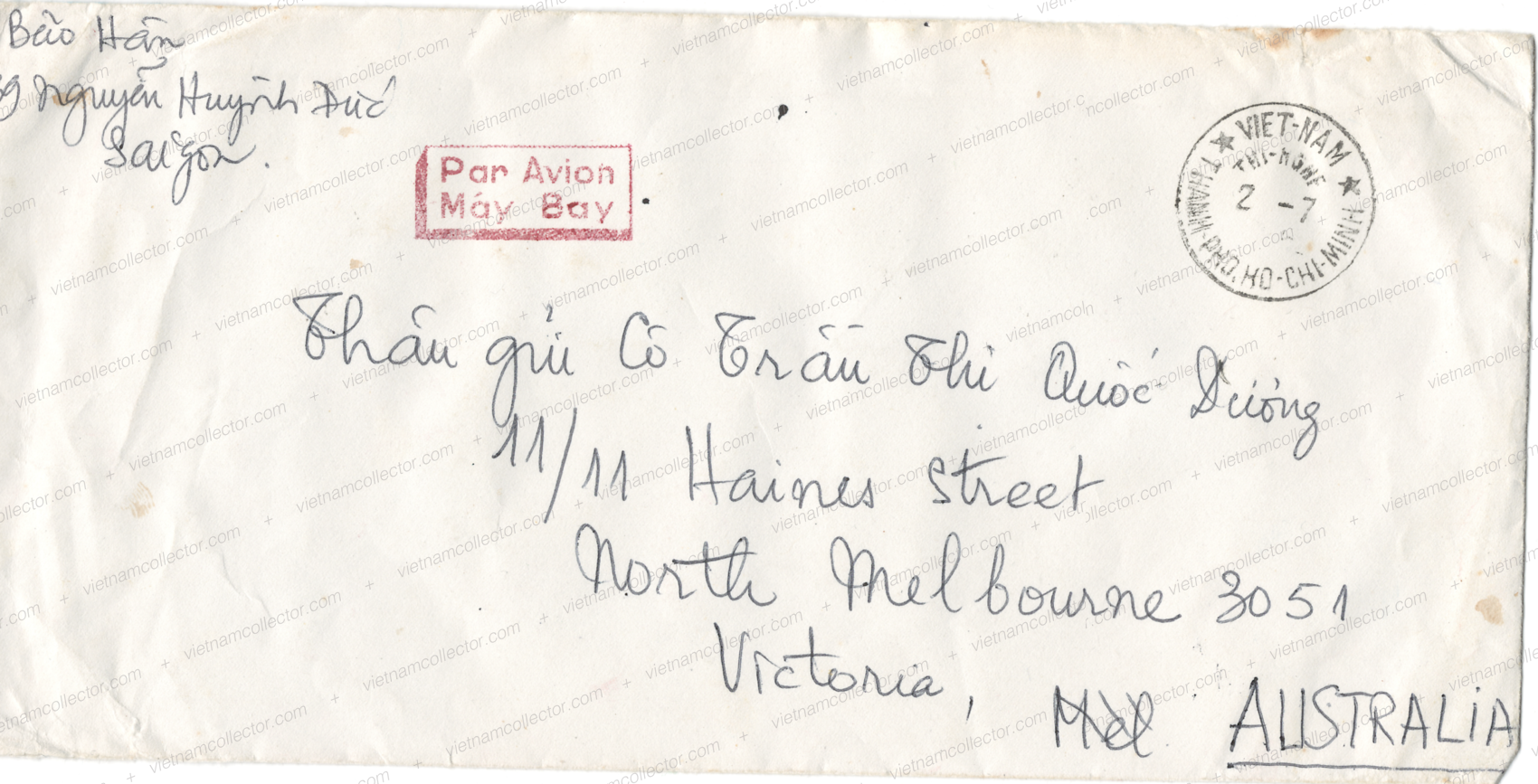
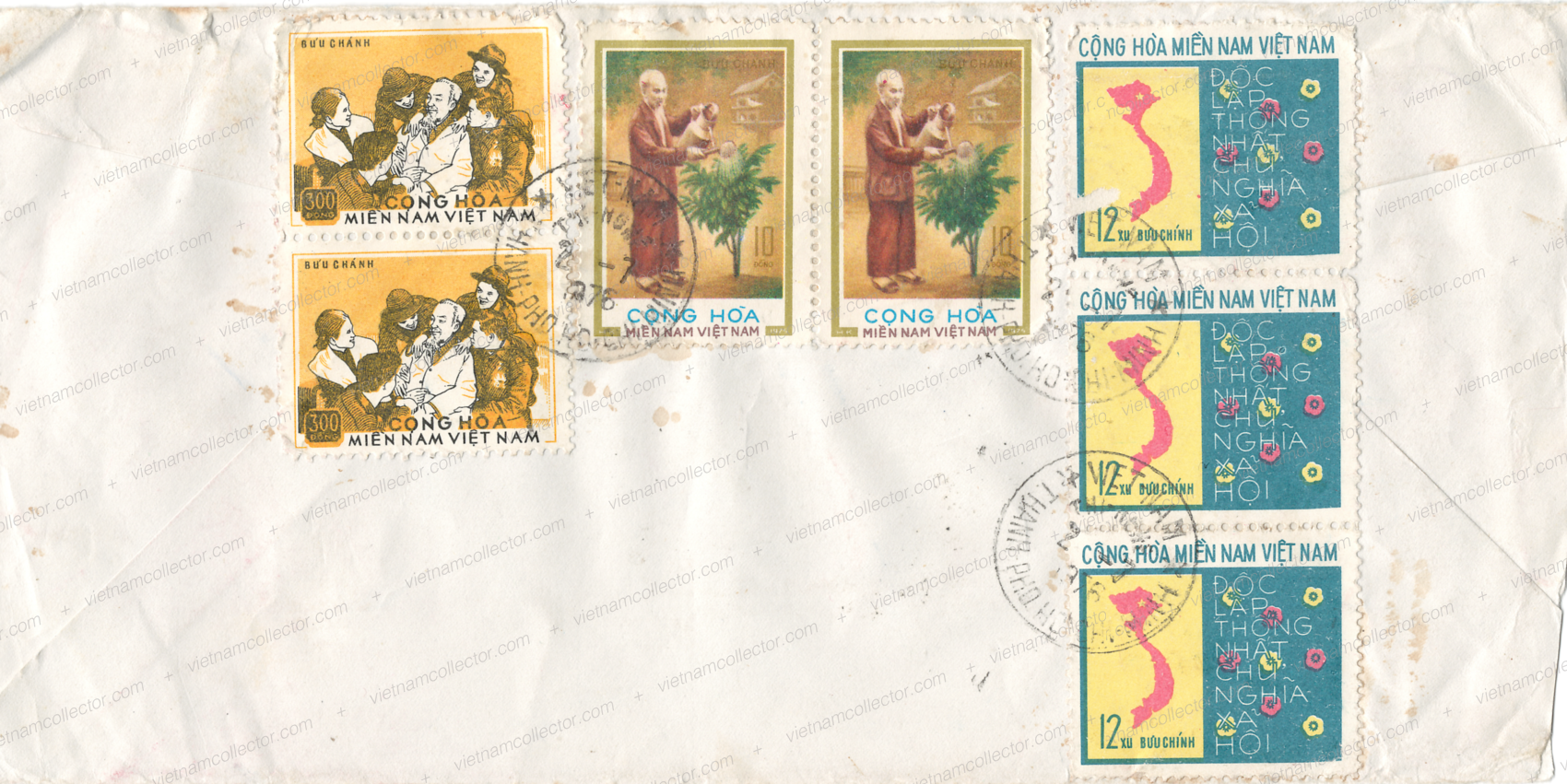
Very rare multiple franking of the 5D value (6) paying the 30D standard letter rate on a letter sent from Rach-Gia (small post office) to My-Tho sent on August 13th, 1975. Note that the Rach-Gia cancel is still from the old South Vietnamese Regime (without the M.N. insert). Mytho machine arrival cancel on the reverse. The 5D value is very hard to find on postally used cover as it was intended as a make-up value to cover the 15D intra-city tariff that was not used very often.
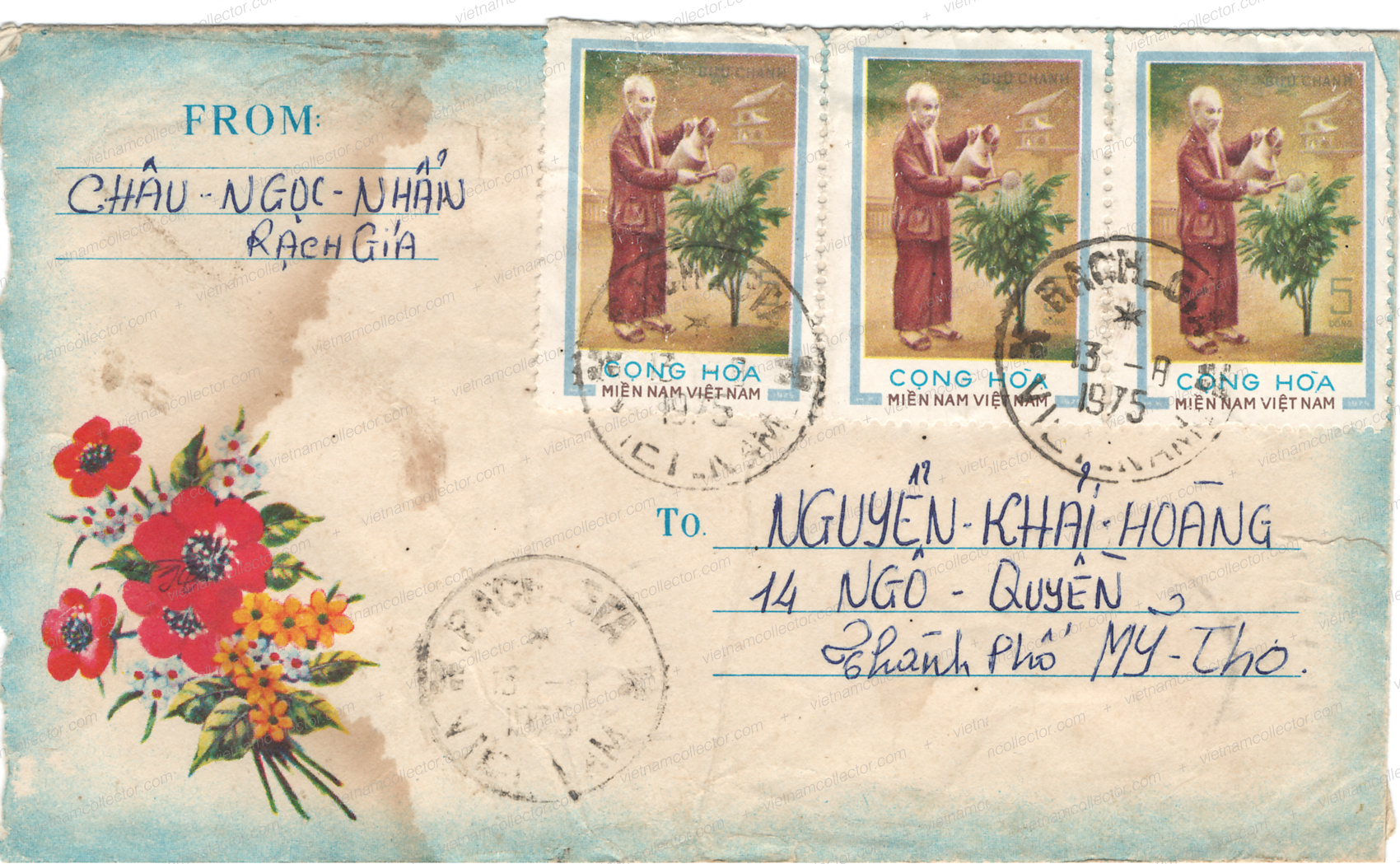
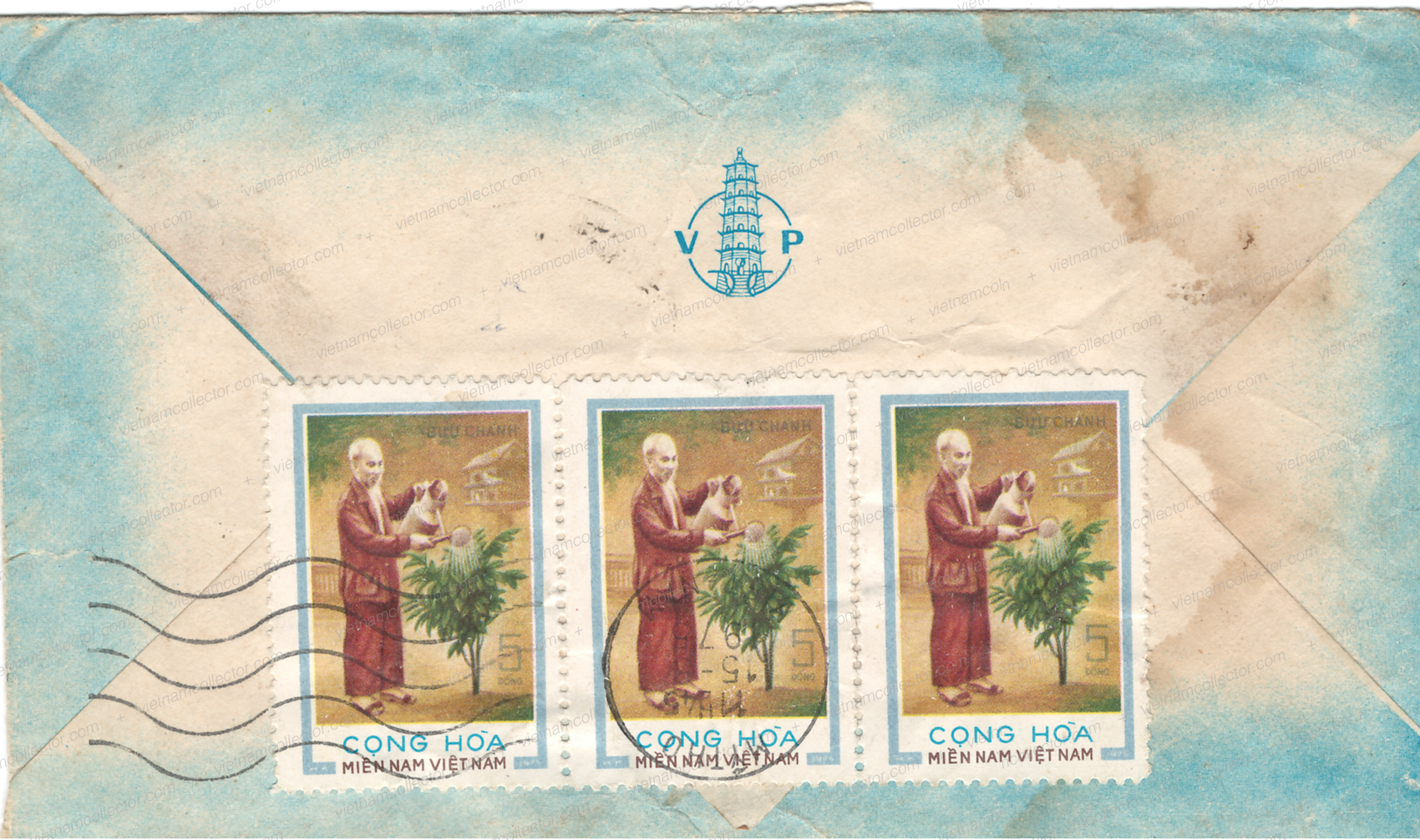
Multiple franking of the 5D value (6) paying an overall postage of 30D on a domestic letter sent from Vinh Long to Hanoi in June of 1975.
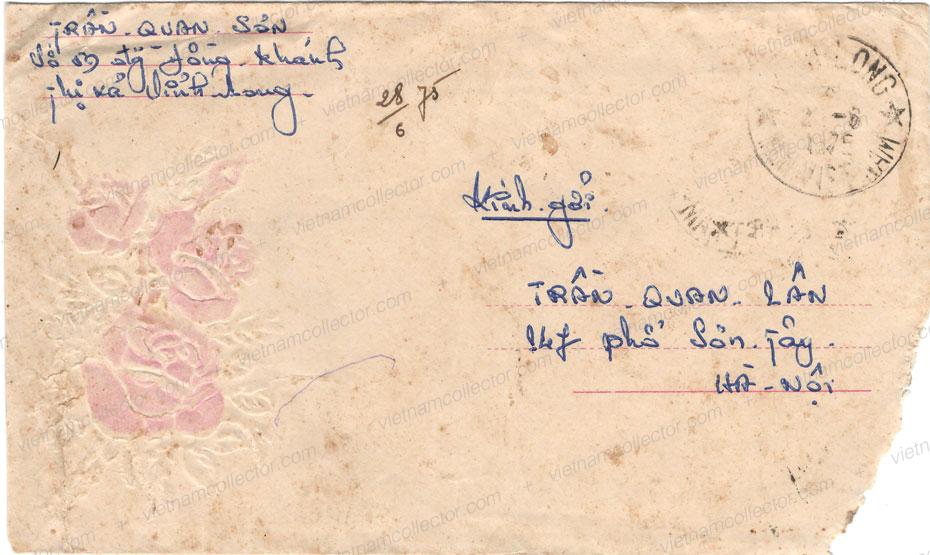
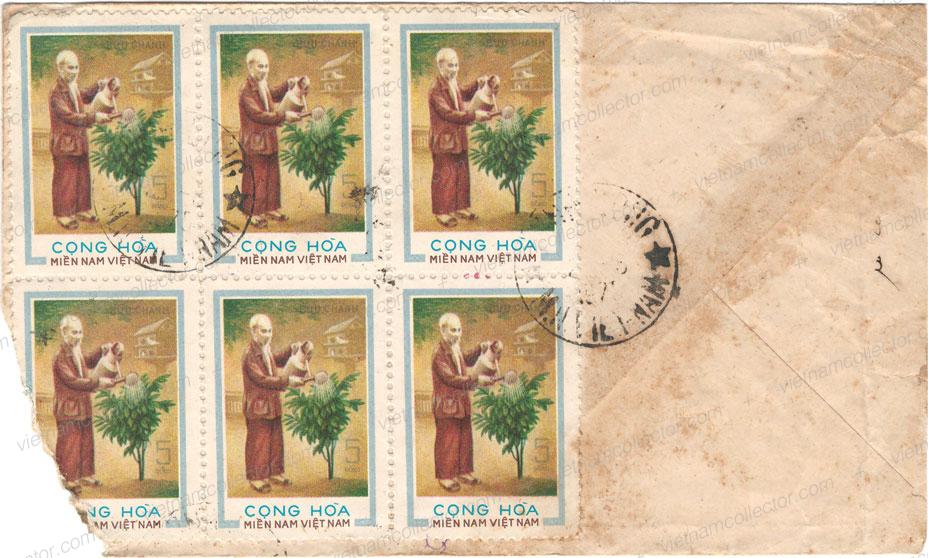
Very rare single franking of the 10D value on a printed matter mailing sent within Ho Chi Minh City. The letter was cancelled with the newly introduced “Thanh Ho Chi Minh” cancel from October, 29th, 1975. Ho Chi Minh was the new name for Saigon.
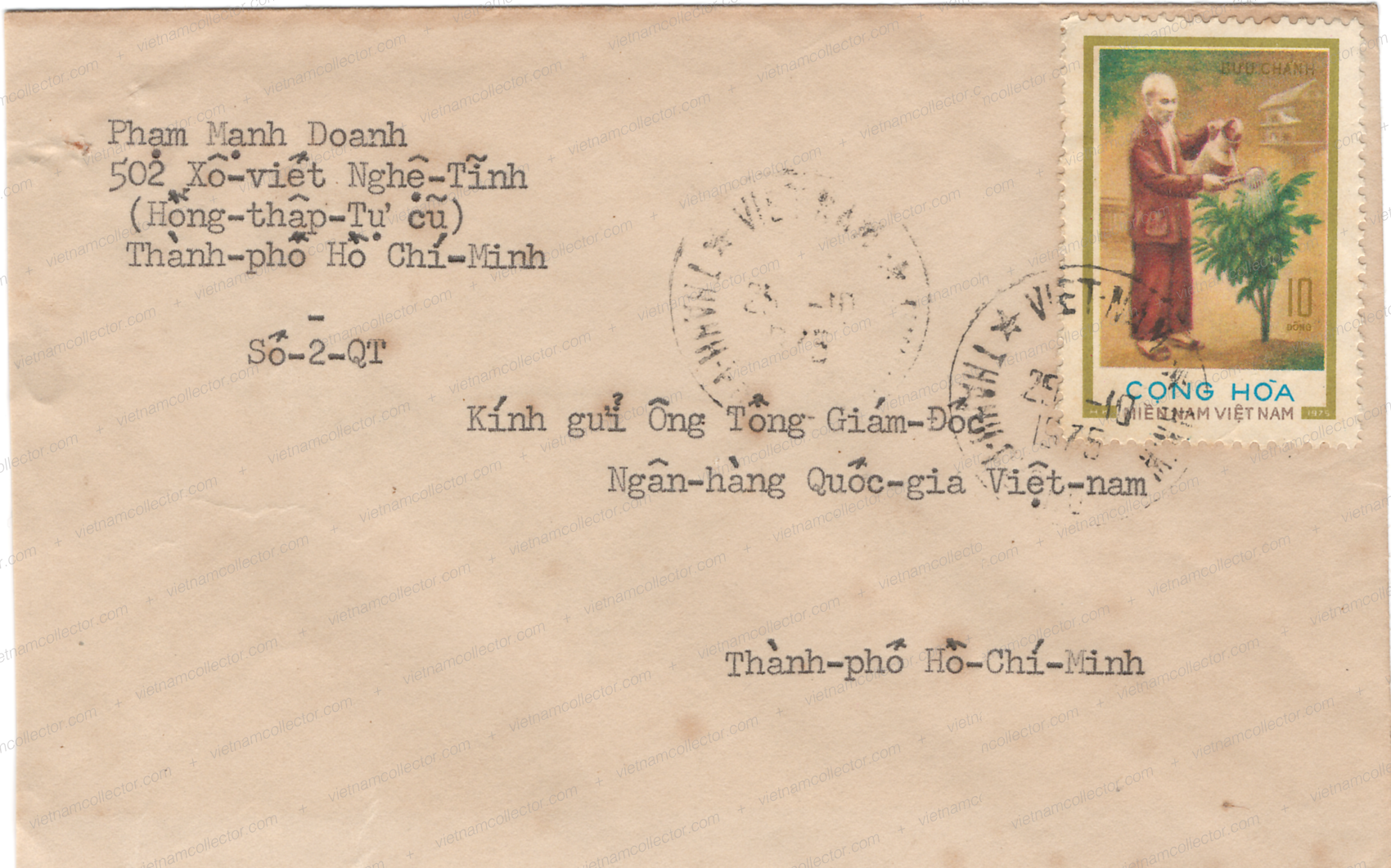
This is a highly unusual use of the 10D HCM with tree stamp. Right after the end of the war there were no revenue stamps for the new regime available yet. As a result normal postage stamps were used in lieu of revenue stamps to pay for certifications/registrations. Here is a contract about buying a bicycle on July 6th, 1975 that used the 10D HCM stamp to pay for the contract’s registration. Exceedingly rare.
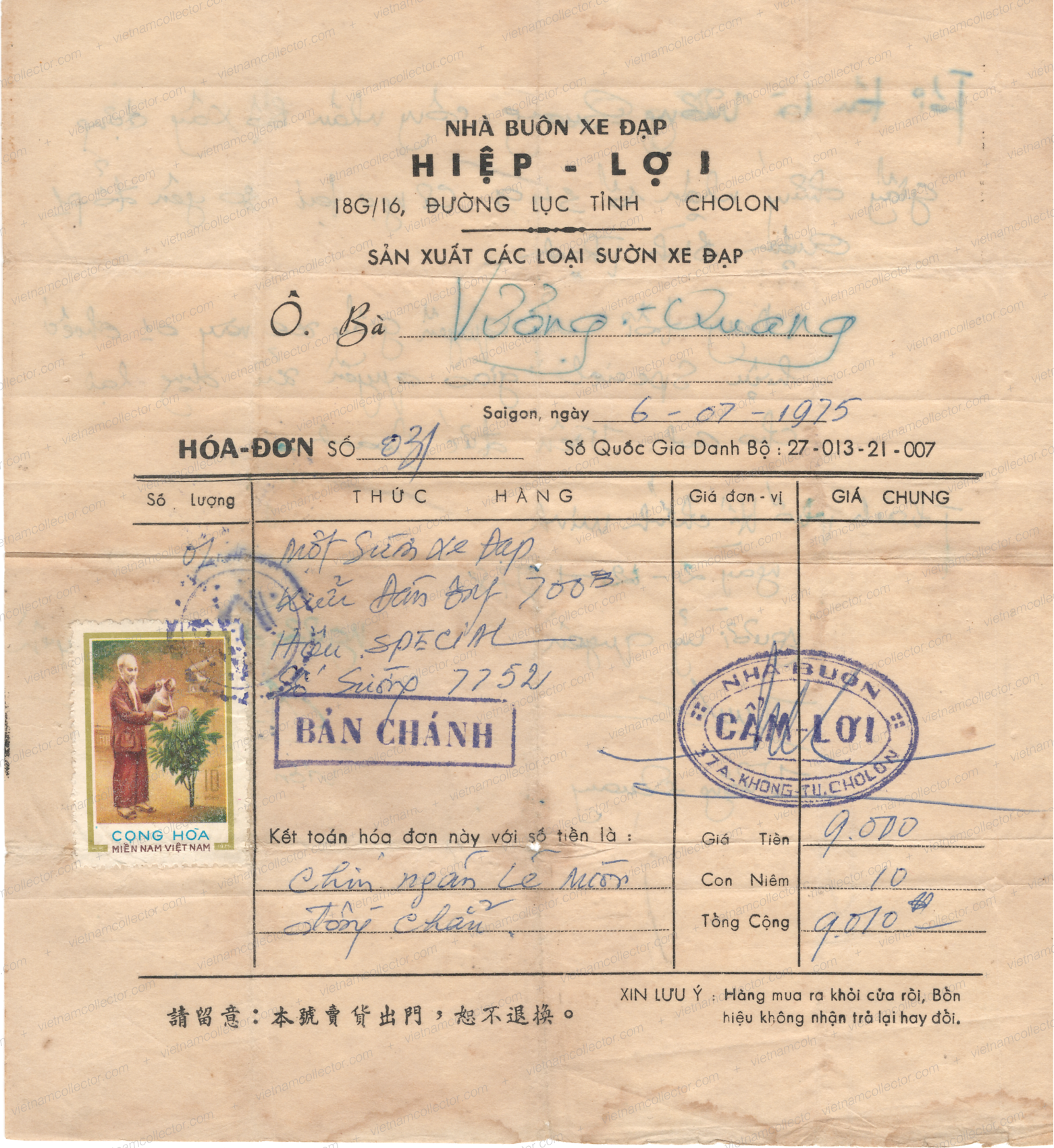
Very rare multiple franking of the 10D making up the 20D rate for printed matter of the second weight level mailed from Ho Chi Minh City to Pham Dang Hung on January 29th, 1976.
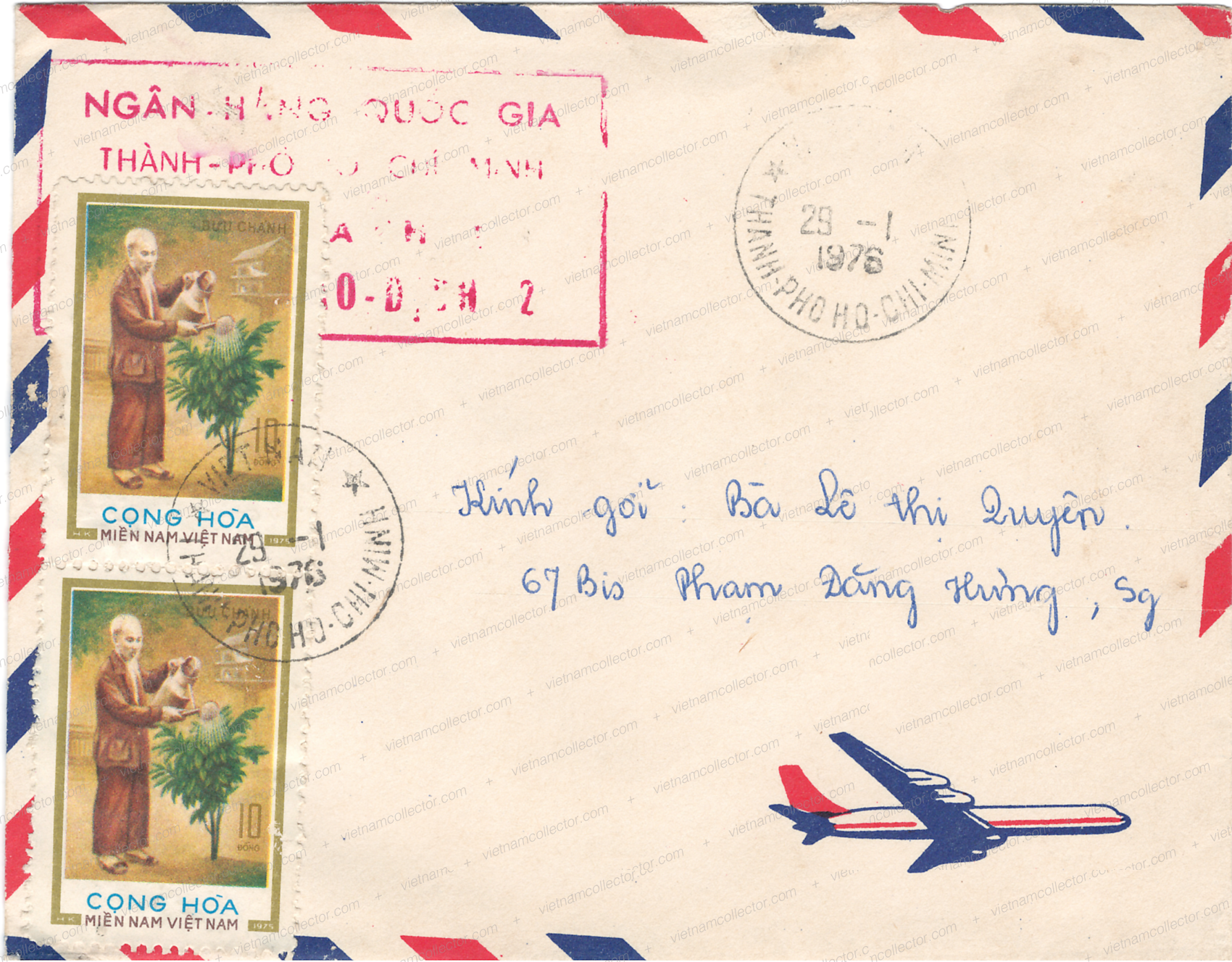
Multiple franking of the 10D value (3) paying the standard letter rate of 30D from Saigon (note that it still used the old name of the city but with the addition of “M.N.”) sent on July 6th, 1975. July 7th arrival cancel on the reverse.
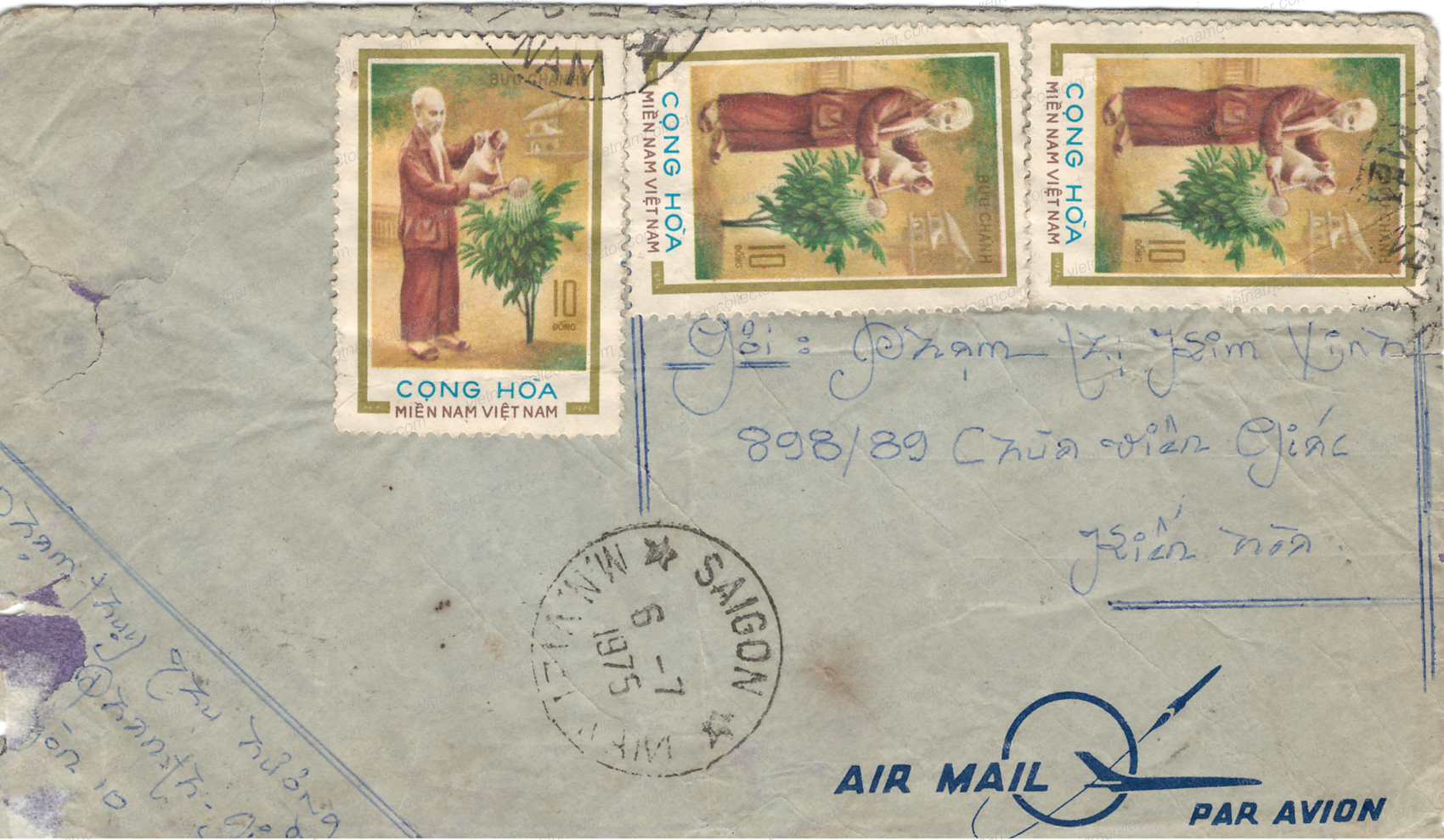
Multiple franking of the 10D (3) value paying the standard letter rate of 30D sent on November 22nd, 1975 from Tay Ninh (small post office) to Ben Tre. Ben Tre arrival cancel on the reverse.
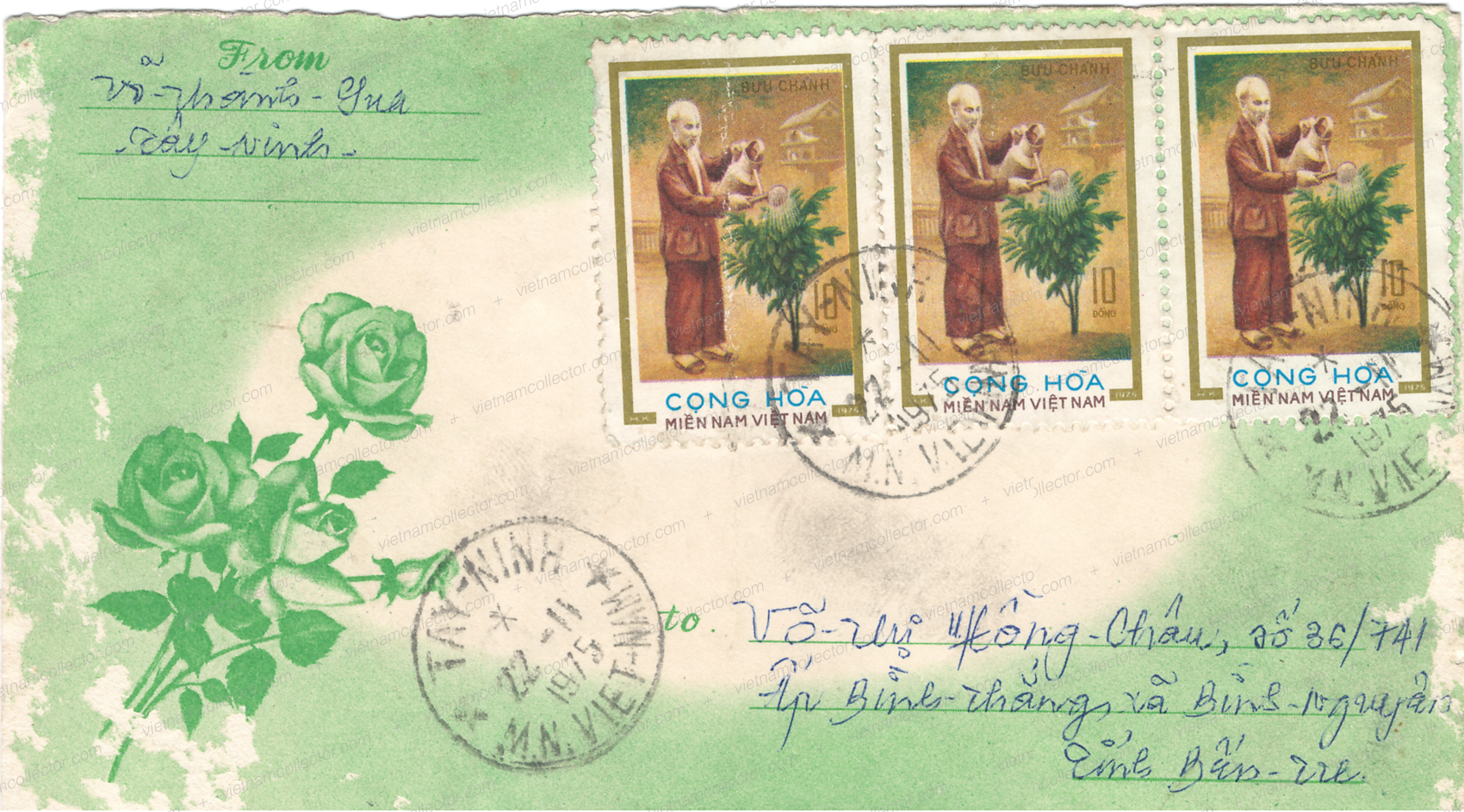
Multiple franking of the 10D value (3) paying the standard letter rate of 30D on a letter sent from Ho Chi Minh City (using the new “Thanh Pho Ho Chi Minh”) on September 1st, 1976 to Huyen Cai Lai. Cay-Lai arrival cancel on the reverse.
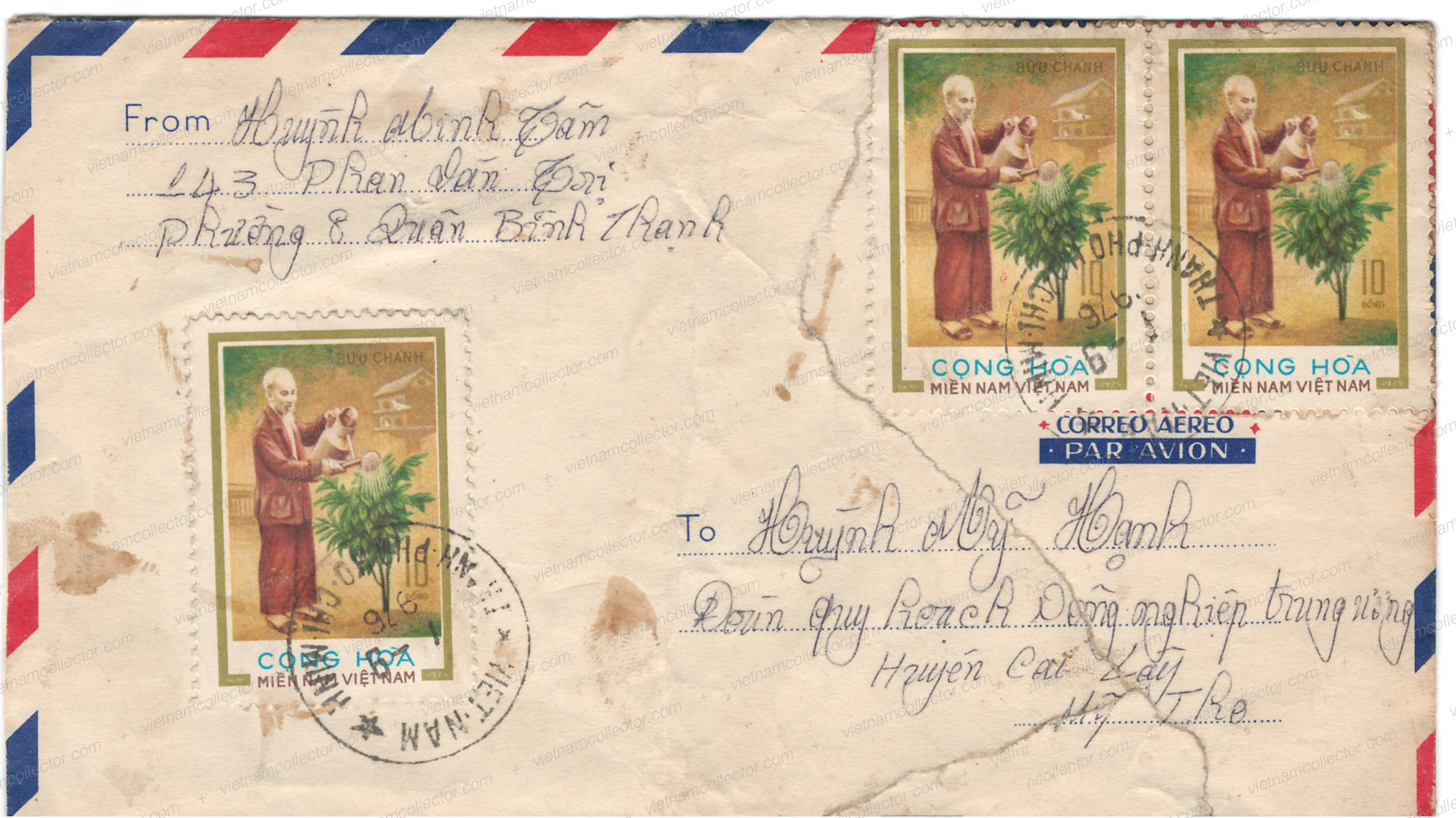
Mixed franking of the 10D Ho Chi Minh with tree value (2) with a 30D Ho Chi Minh among soldiers stamps paying a 50D rate on a letter sent from Ho Chi Minh City to Hanoi on February 28th, 1976. This letter must have been heavier than the standard letter of 20g.
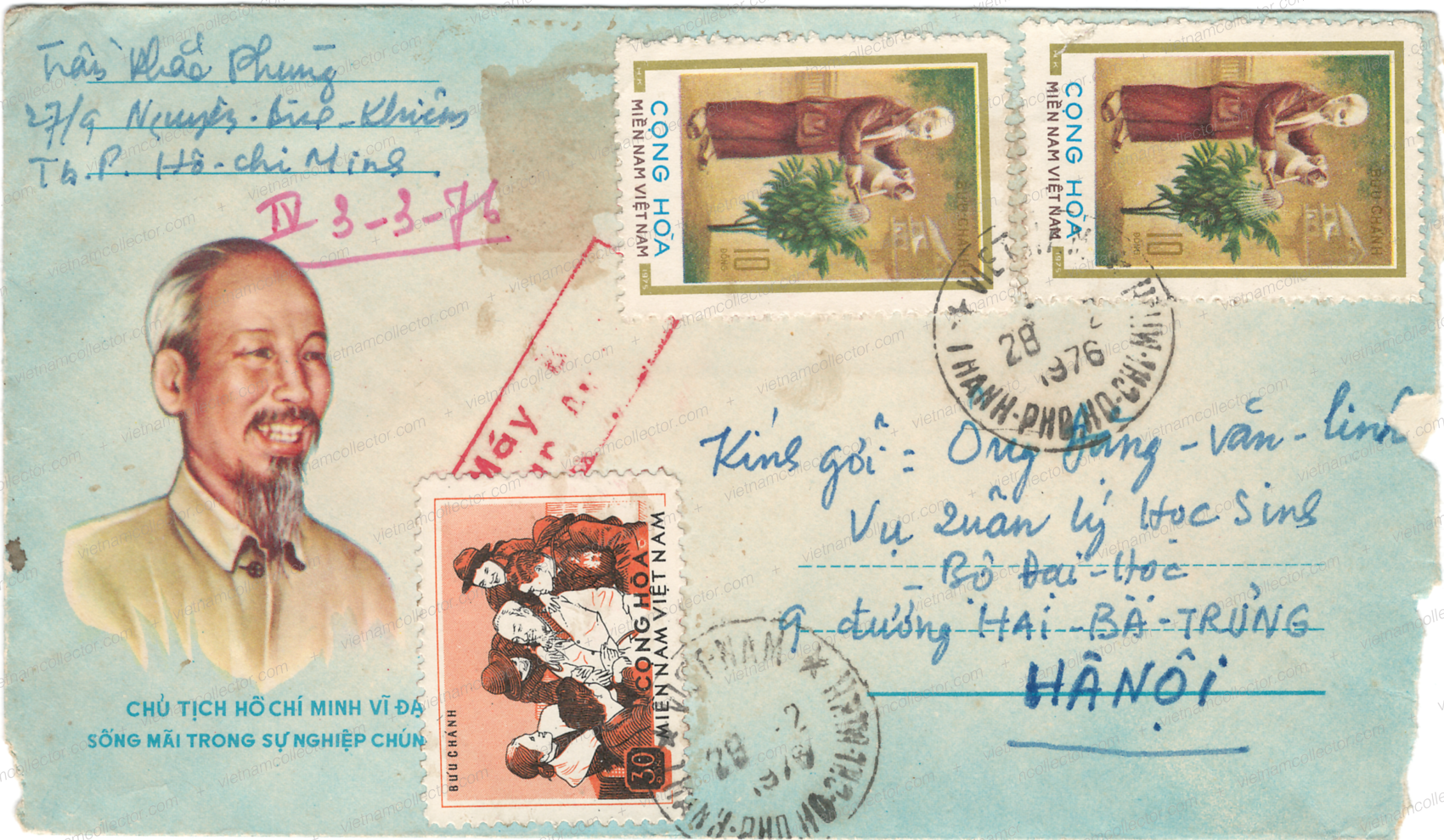
Very rare registered letter sent in July of 1975 from Can Tho to Hanoi. The letter is franked with ten 10D HCM with tree stamps which suggests that the registration fee at the time amounted to 70D. Registered letters from this era are very rare as very few people had the means to pay for such an expensive extra service.
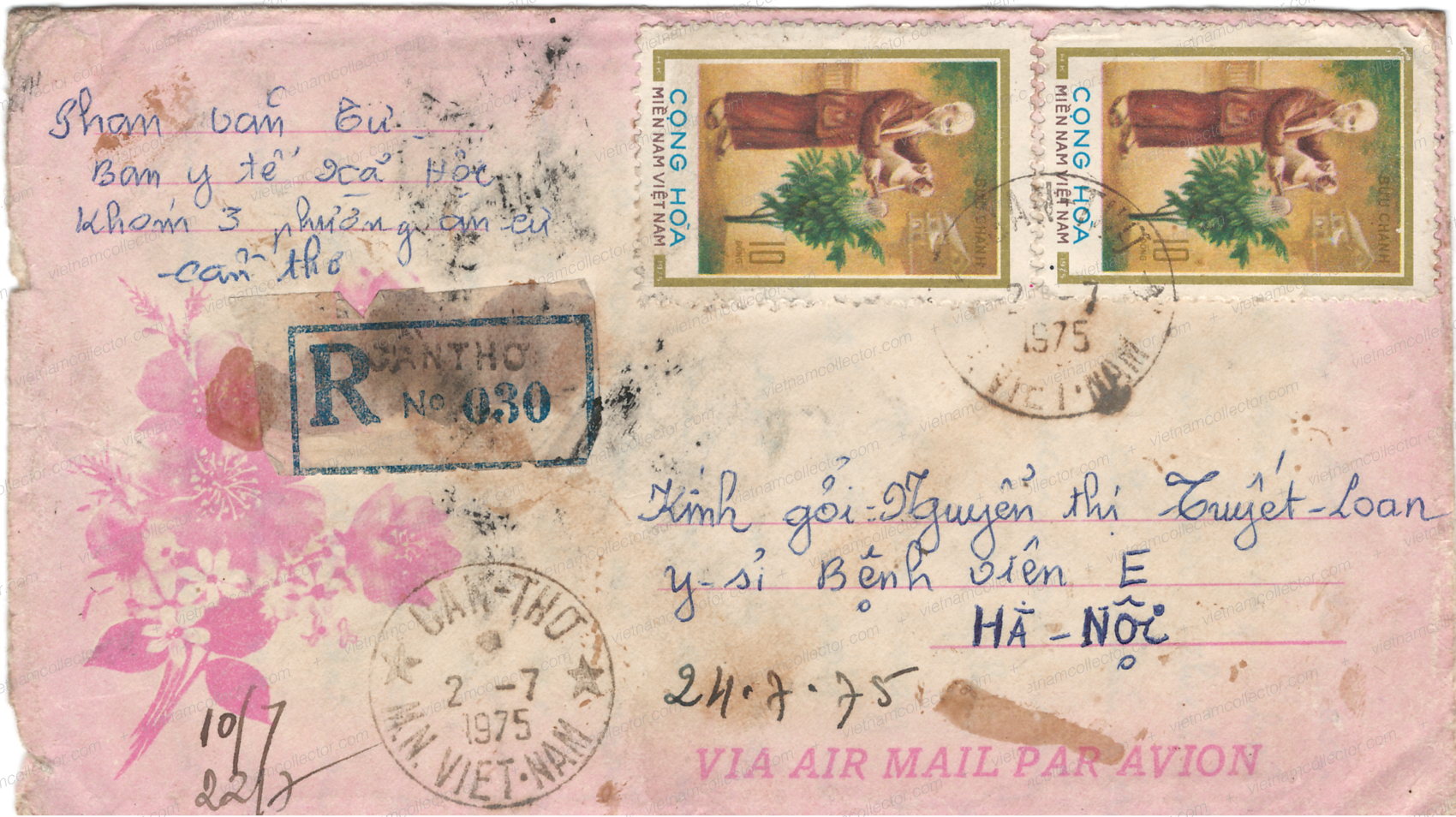
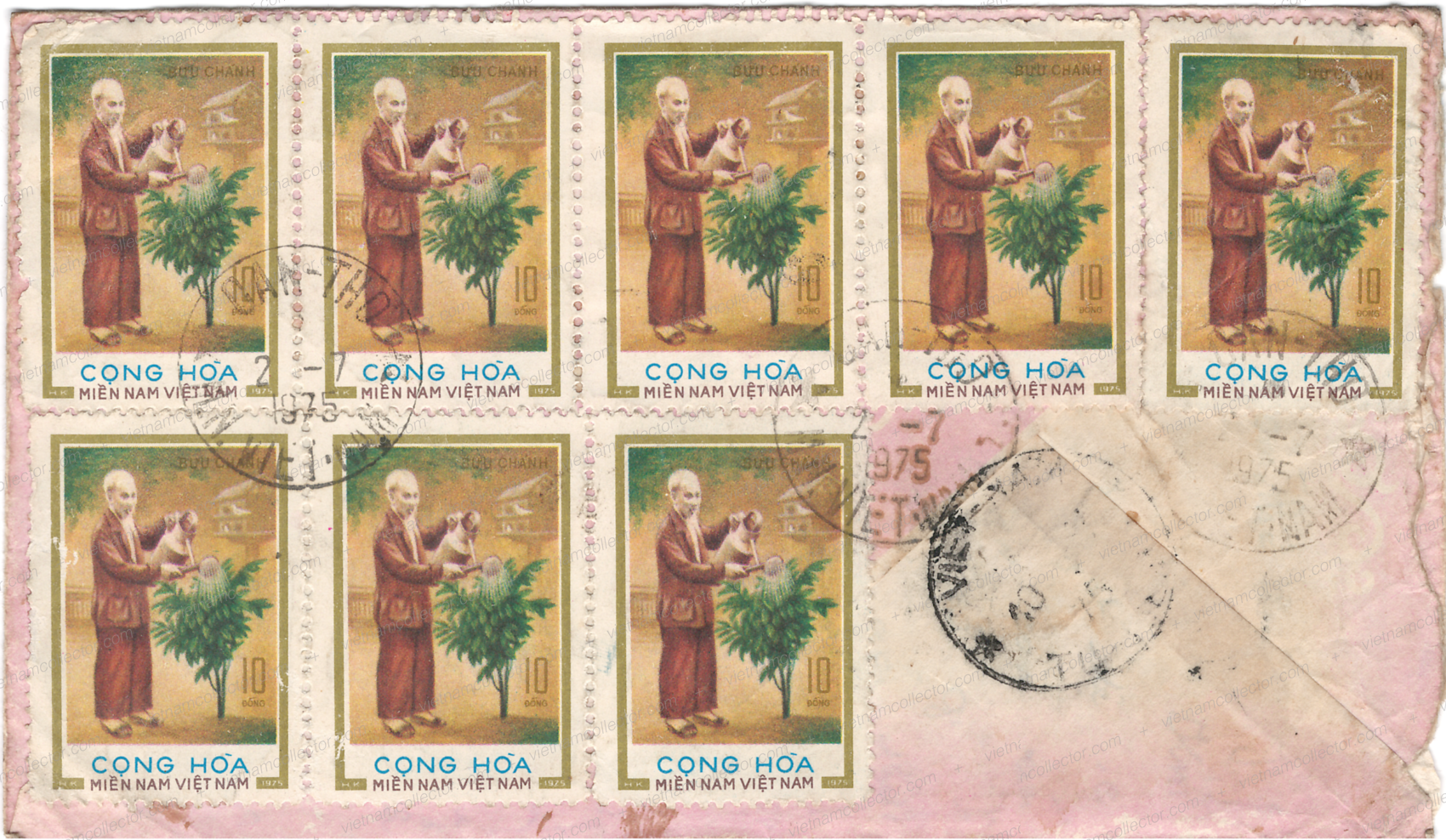
Interesting mixed currency franking of four stamps in the NLF Dong (620D) together with three stamps in unified currency (36xu). The NLF Dong was devalued by 500:1 on April 1st, 1976 which meant the two stamps in old currency were only worth 1.24D in new currency at the time of mailing. Together with the 36xu stamps in new currency the overall postage hence amounted to 1.60D on this letters ent to Australia in July of 1976.


Single franking of the 30D value wit the magenta red frame paying the standard letter rate on a letter sent from Saigon (still using the old name of the city but with the addition of “M.N.”) to Hanoi on June 17th, 1975.
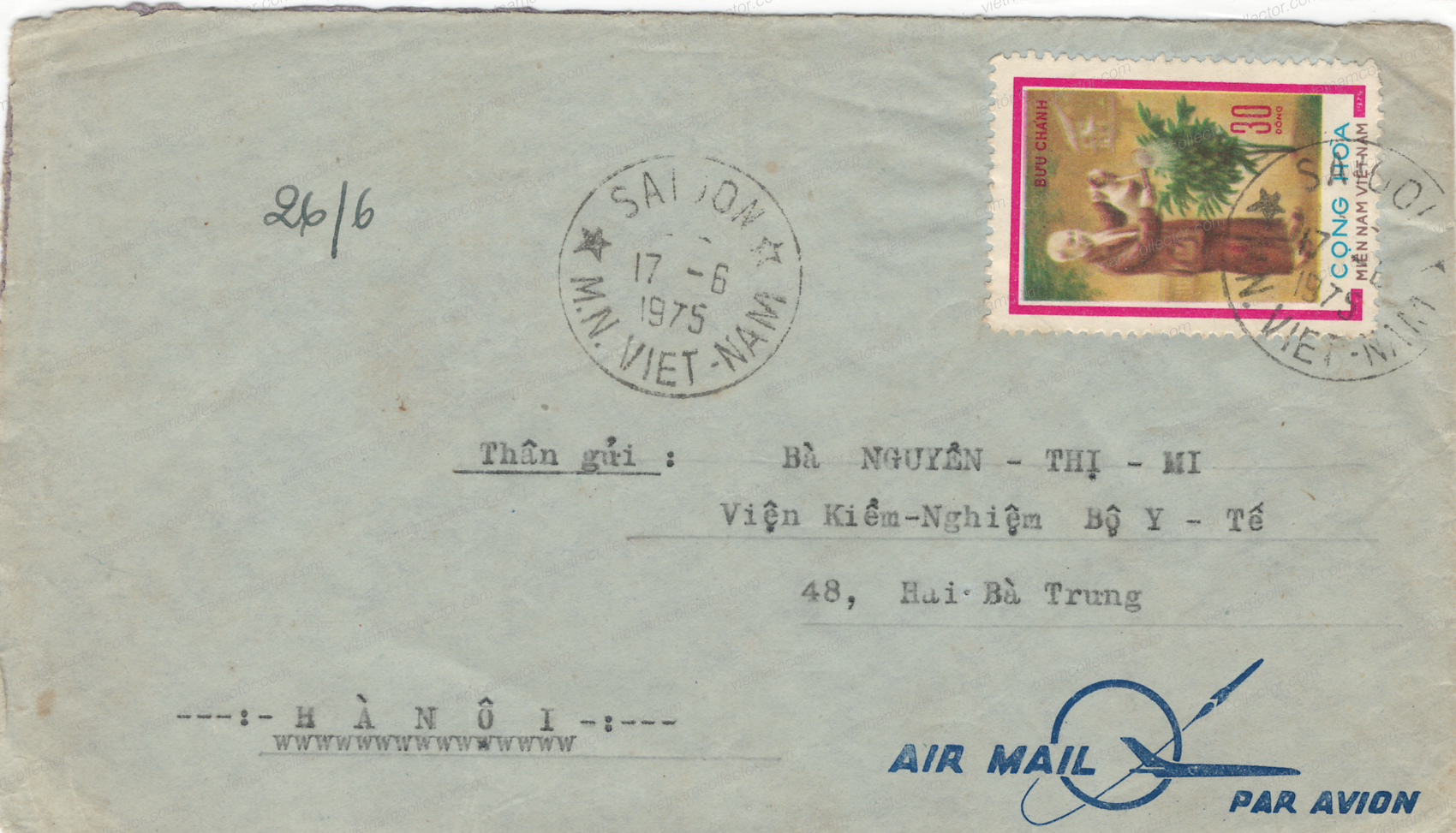
Single franking of the 30D value with the magenta-red frame paying the standard letter rate on a letter sent from Bac-Goo (small post office) to Ho Chi Minh City mailed on January 23rd, 1976 to Ho Chi Minh City. HCM Cty arrival cancel on the reverse.
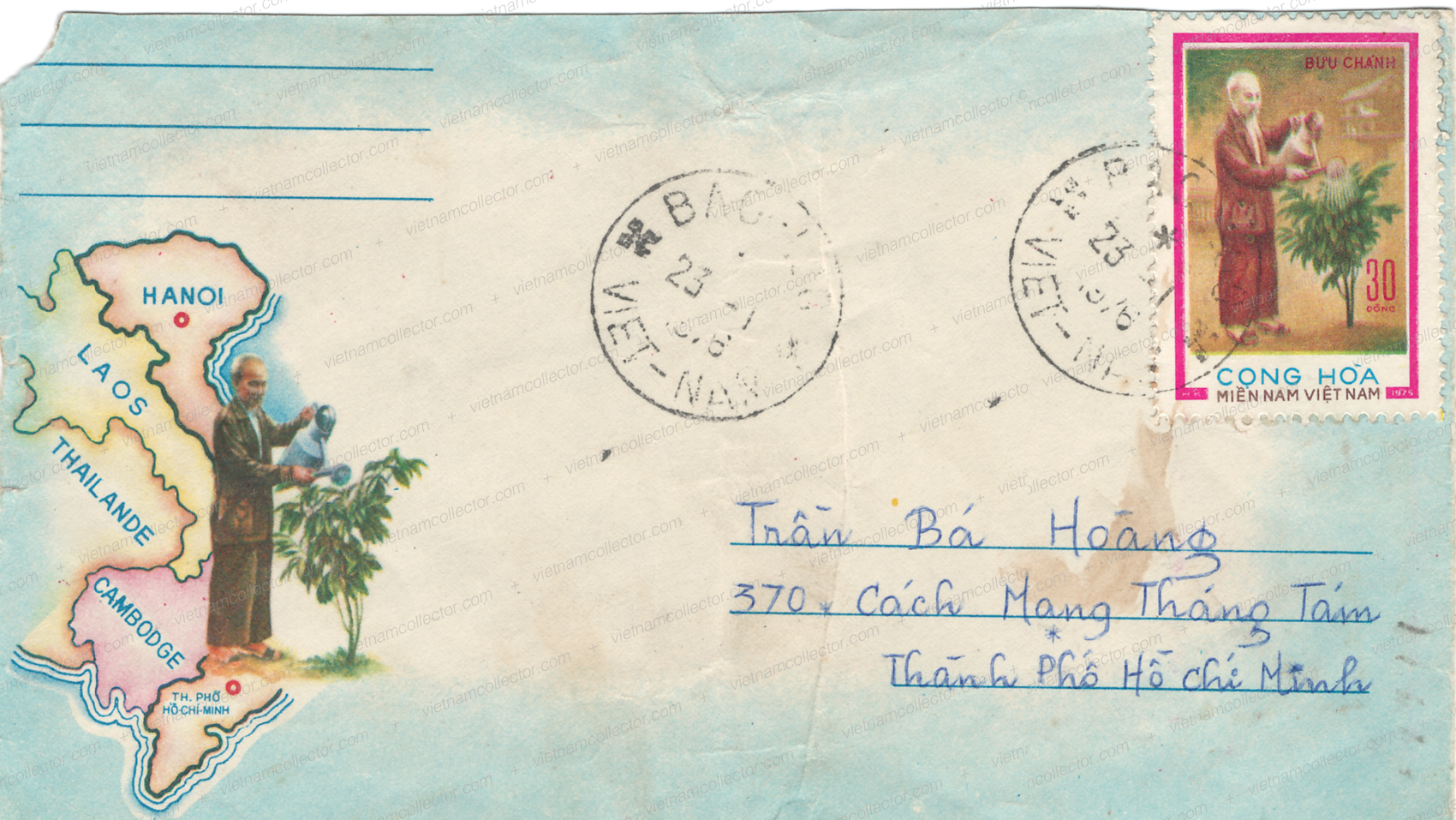
Single franking of the 30D value with the magenta-red frame paying the standard letter rate on a letter sent from Saigon to Hanoi mailed on June 10th, 1975. Hanoi arrival cancel on the reverse.
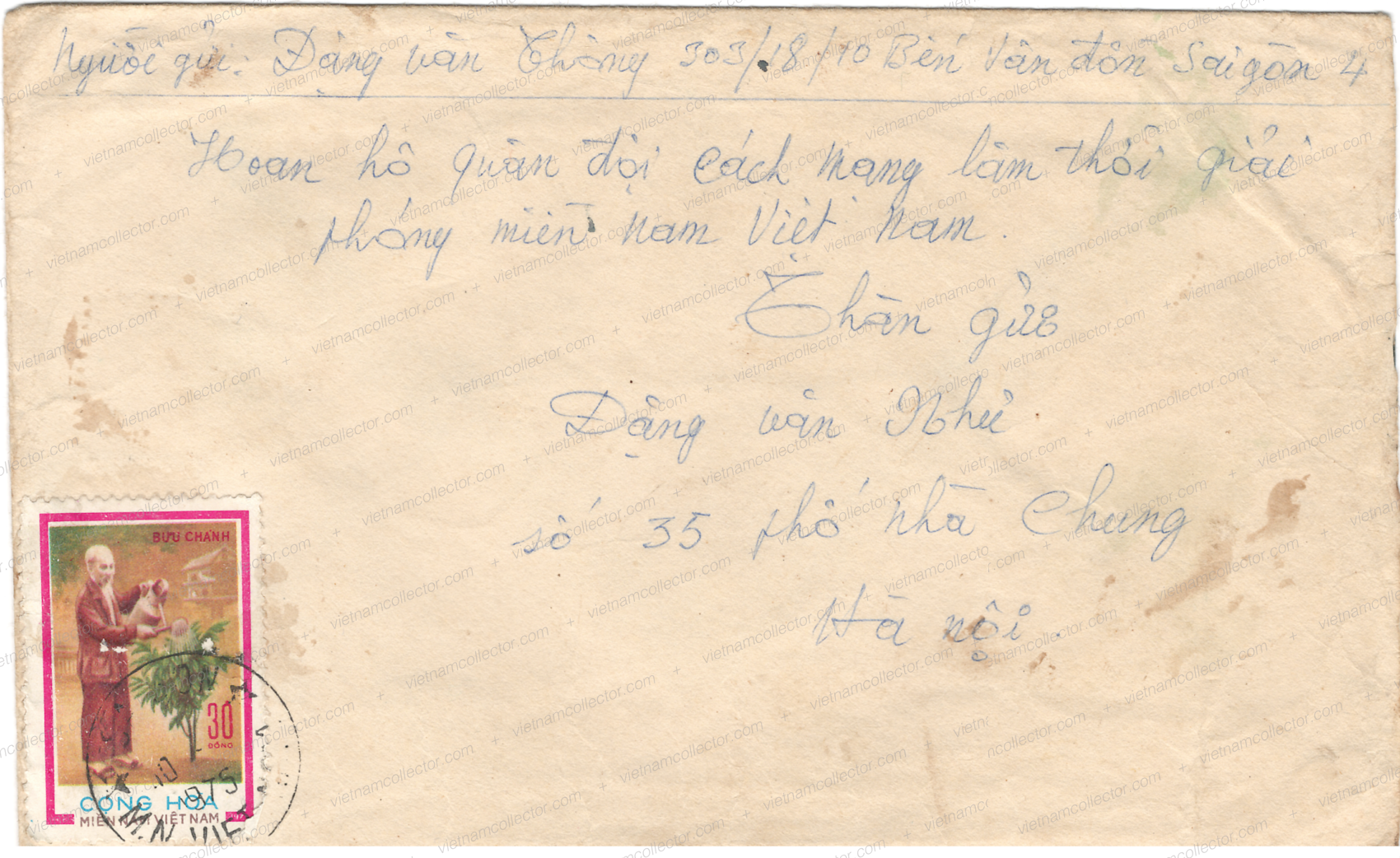
Single franking of the 30D value with the magenta-red frame paying the standard letter rate on a letter sent within Ho Chi Minh City. Cancelled with the new “Thanh Pho Ho Chi Minh” cancel on February 14th, 1976.
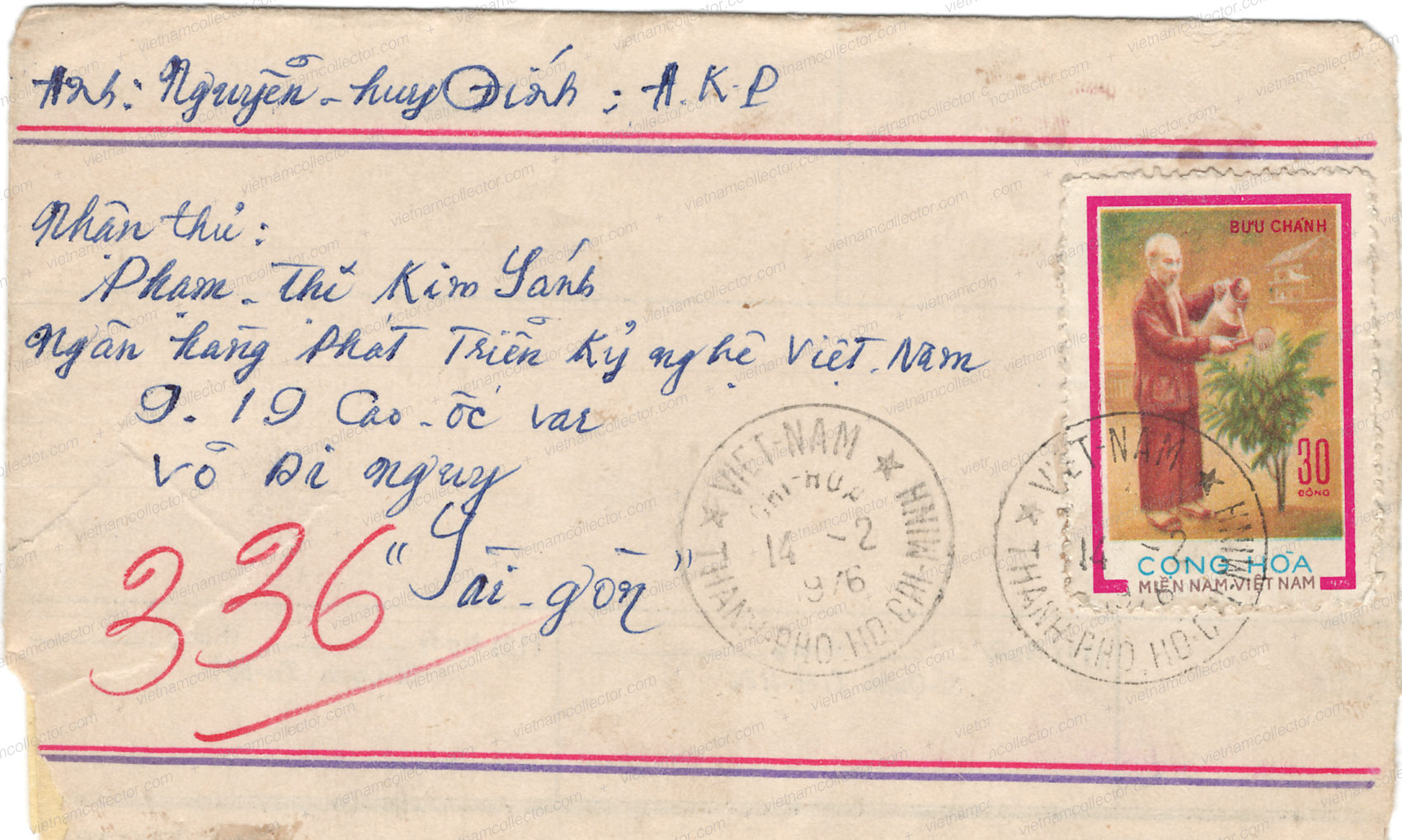
Rare multiple franking of the 30D value with the red frame paying the second weight level domestic letter rate. The letter was sent in December of 1975 from Ho Chi Minh City to Hanoi which means that the NLF Dong had not been devalued yet.
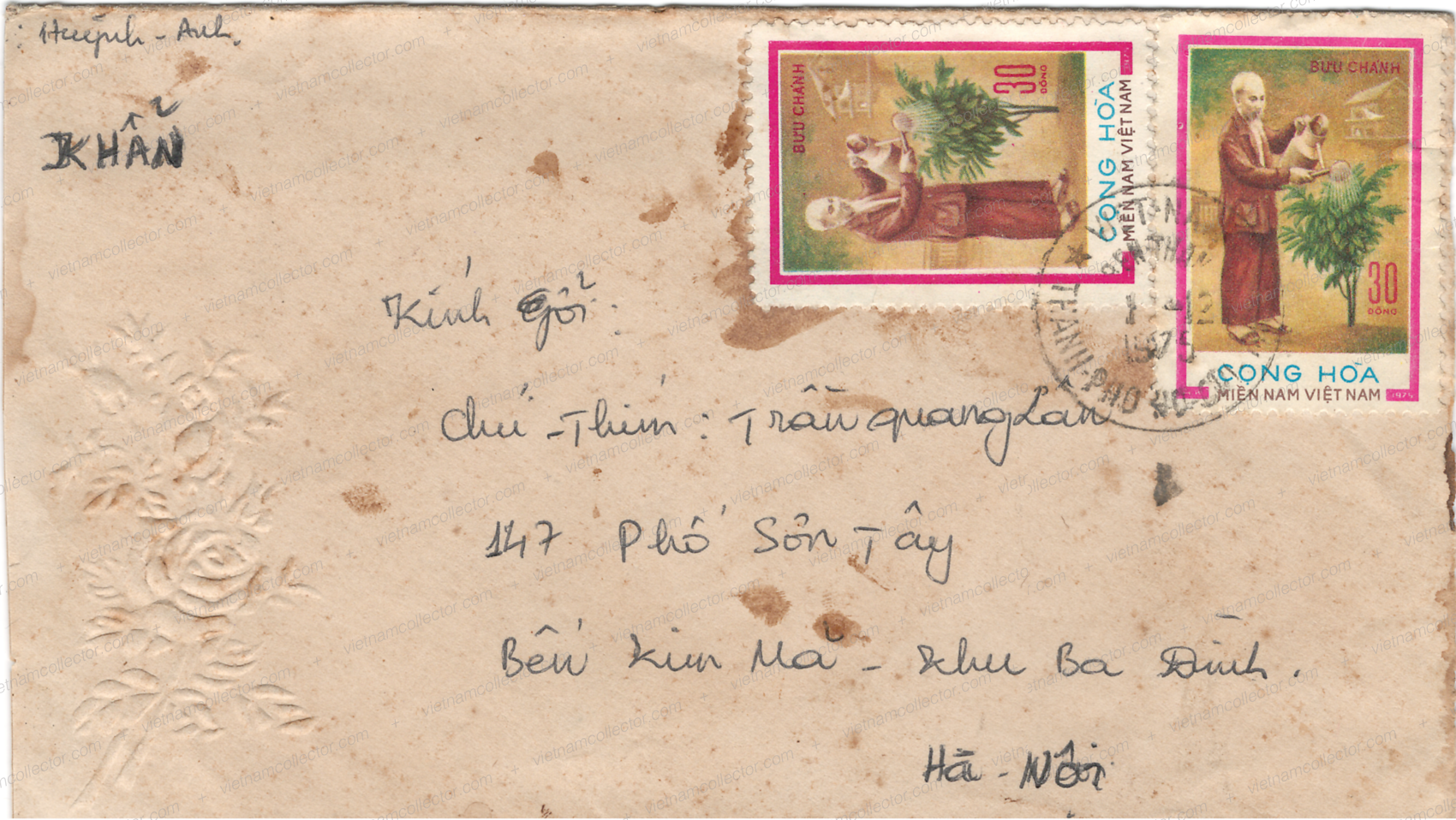
Rare multiple franking of the 30D value (2) paying the 12xu rate in force at the time on a larger letter sent from Saigon to Hanoi in June of 1976. The NLF Dong was devalued in April of 1976 by 500:1 which meant that the 60D postage on this letter was only worth 12xu in new Dong at the time of mailing. The letter is cancelled with a rare cancel “Saigon Tan Dinh”.
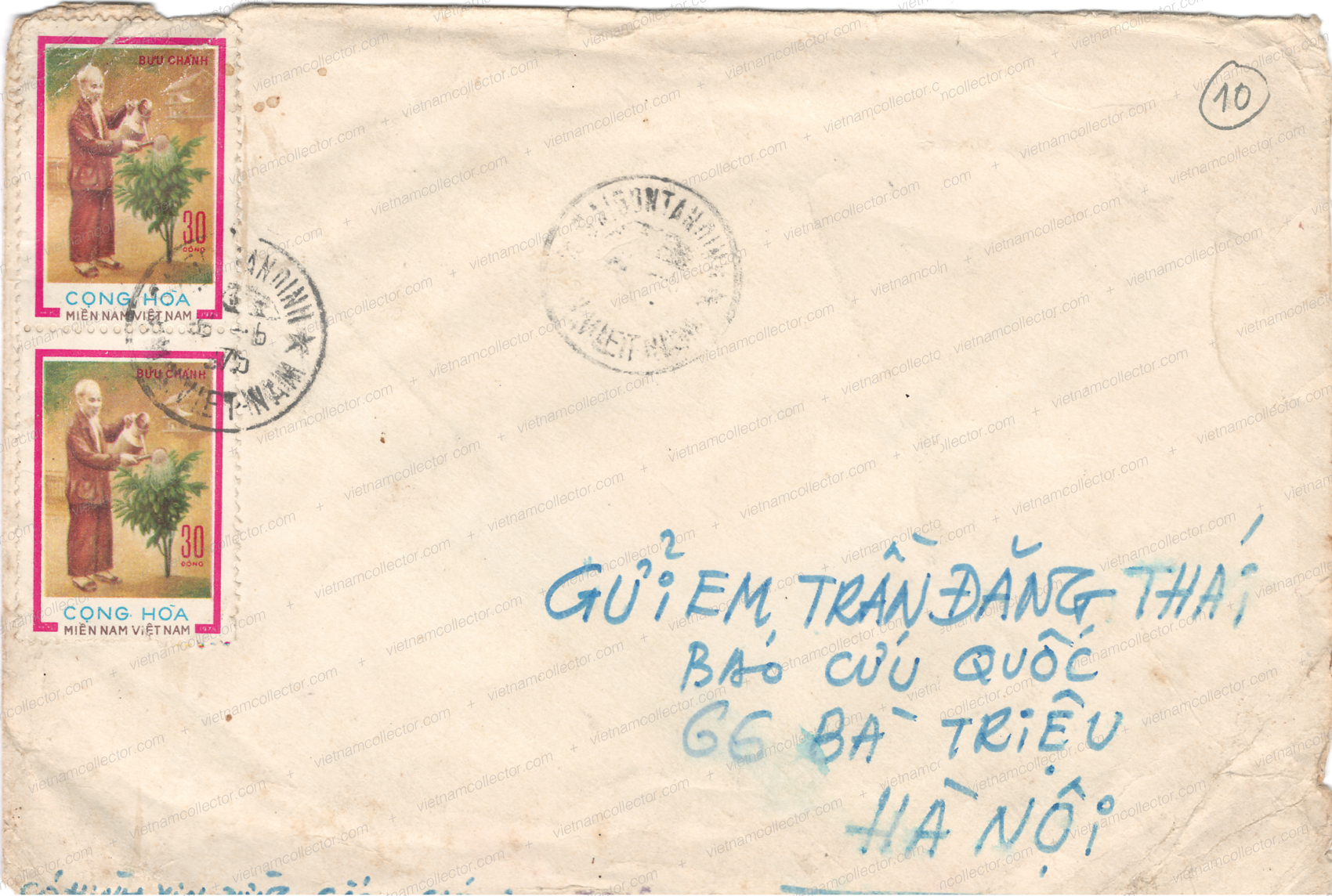
This is a highly unusual use of the 30D HCM with tree stamp. Right after the end of the war there were no revenue stamps for the new regime available yet. As a result normal postage stamps were used in lieu of revenue stamps to pay for certifications/registrations. Here is a contract about buying a motorized bicycle on August 29th, 1975 that used the 30D HCM stamp to pay for the contract’s registration. Exceedingly rare.
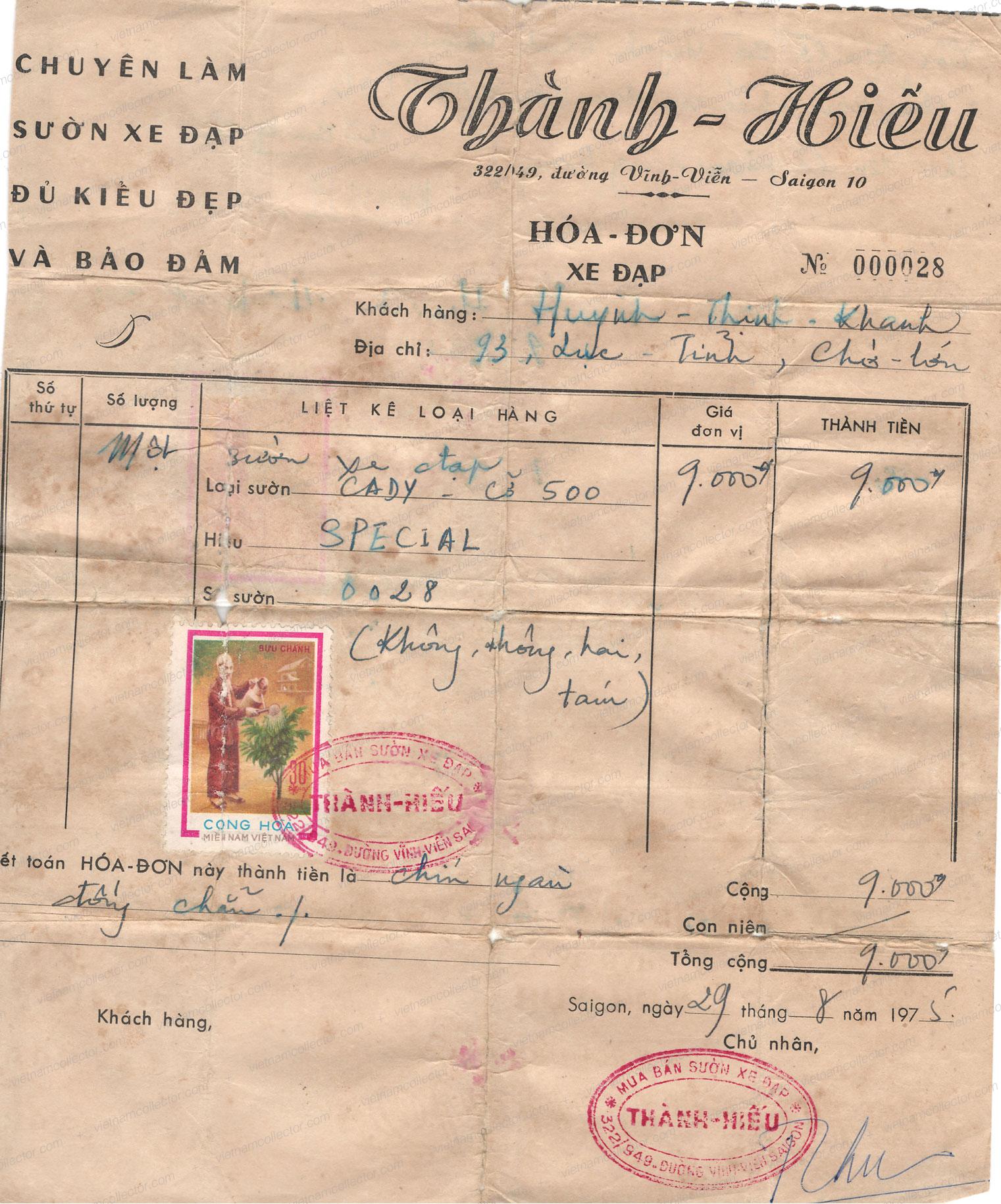
Mixed franking of the 10D(2) and 30D value with the magenta-red frame on a letters ent from Saigon to Hanoi on July 13th, 1975. This letter must have been heavier than the standard 20g.
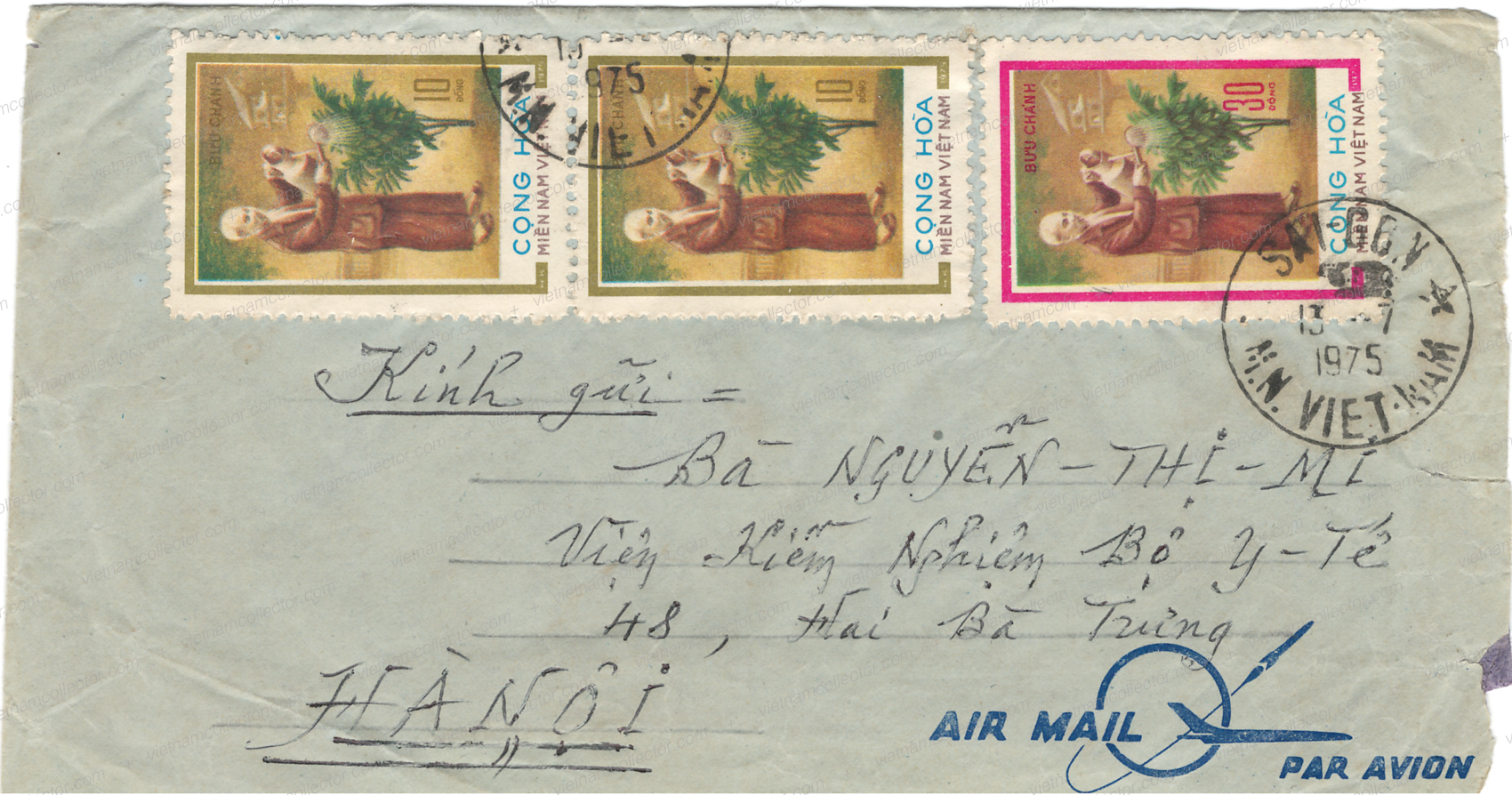
Single franking of the 30D value with the olive-brown frame sent from Cao Lanh to Sadec on a letter sent on November 5th, 1975. Note that this small post office was still using the cancel of the old South Vietnamese Regime (without the addition of “M.N.”). Sadec arrival cancel on the reverse.
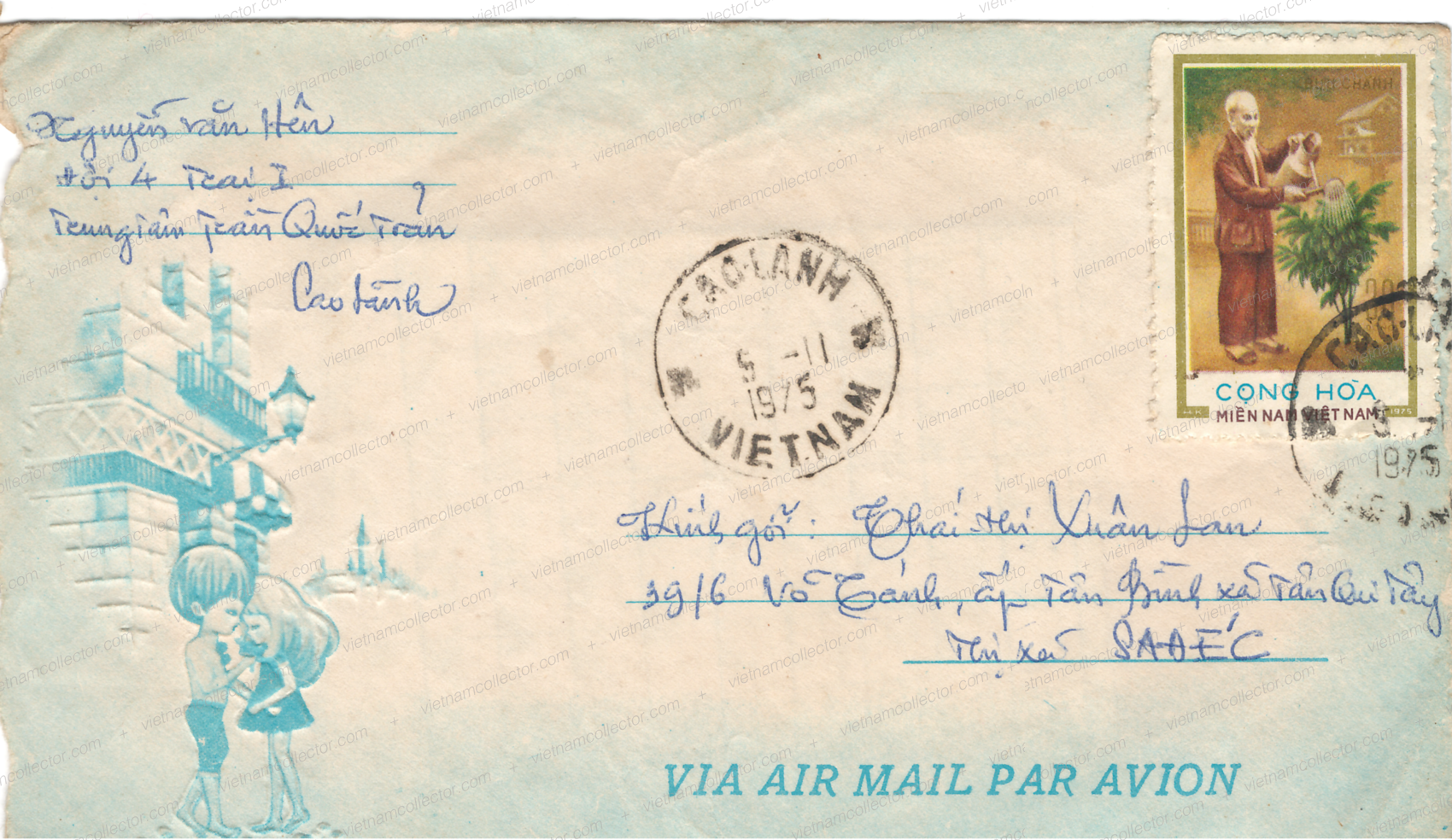
Single franking of the 30D value with the olive-brown frame sent from HdanhNha to Saigon on a letter sent on June 28th, 1975. Note that this small post office was still using the cancel of the old South Vietnamese Regime (without the addition of “M.N.”). Thanh Pho Ho Chi Minh arrival cancel on the reverse.
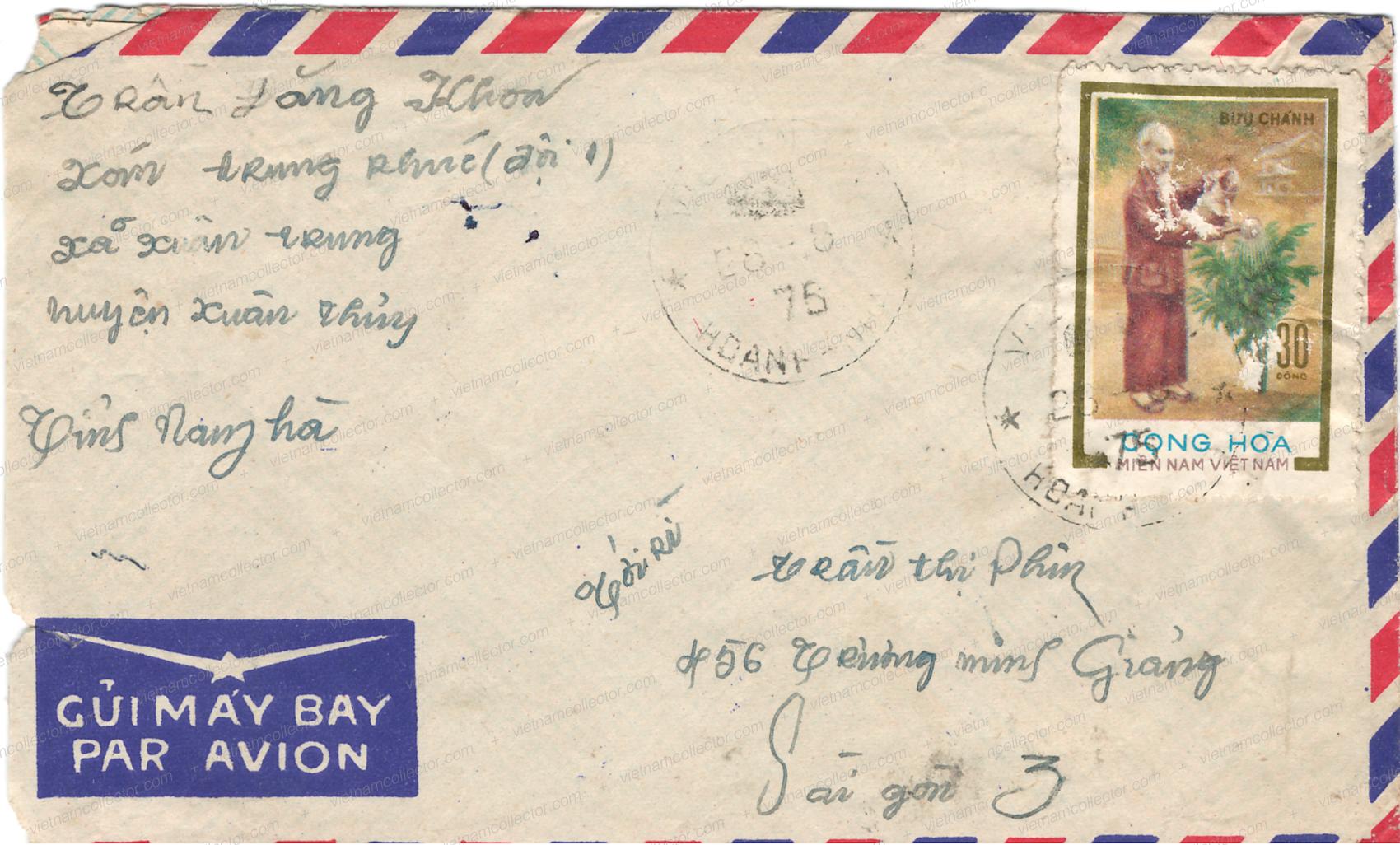
Single franking of the 30D value with olive-brown frame paying the standard letter rate on a letter sent within Saigon. New “Thanh Pho Ho Chi Minh” cancel from October 23rd, 1975.
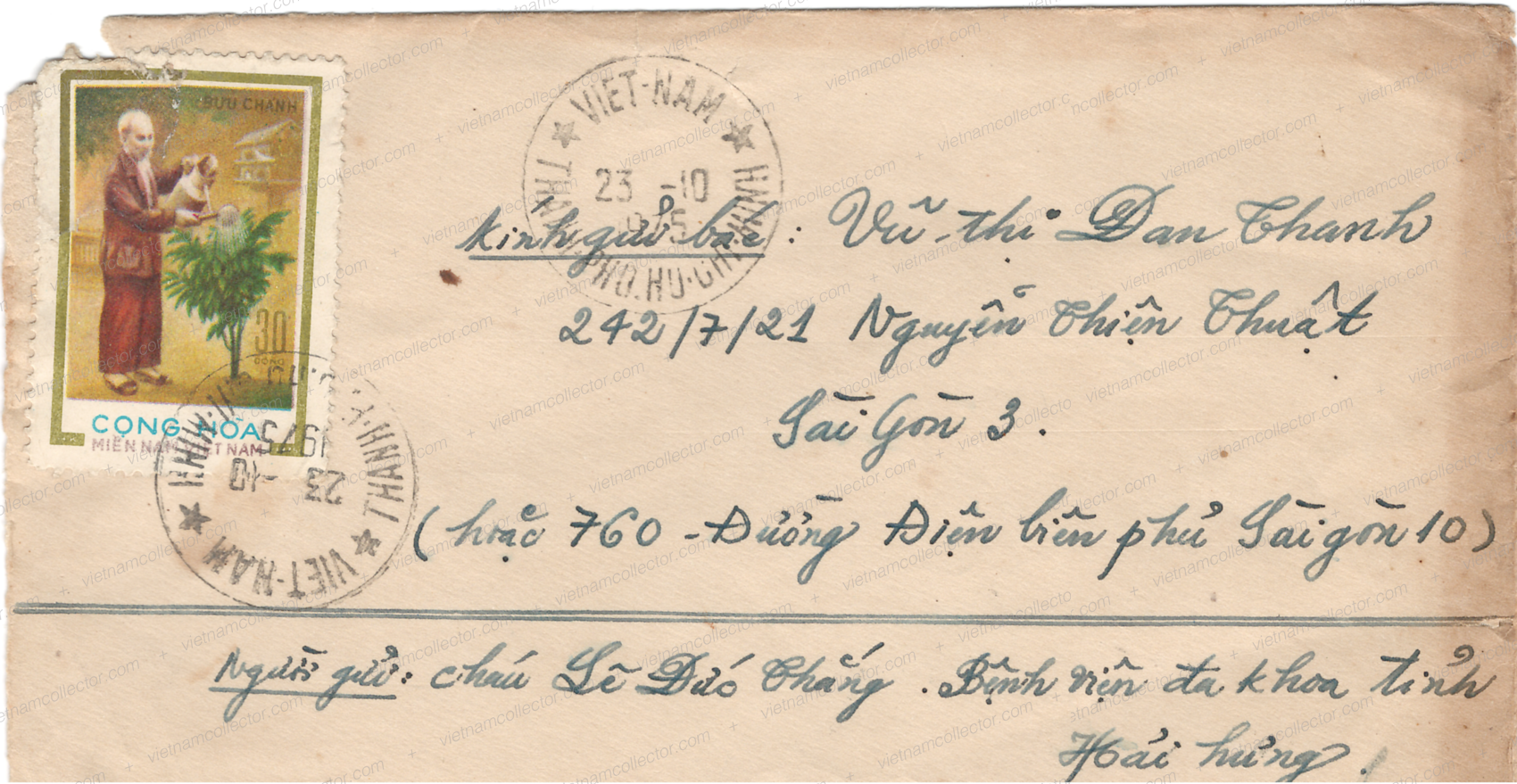
Single franking of the 30D value with the olive-brown frame paying the standard letter rate on a letter sent from Ho Chi Minh City to Ha Son Binh mailed on March 15th, 1976. Huong Tin transit cancel on the reverse.
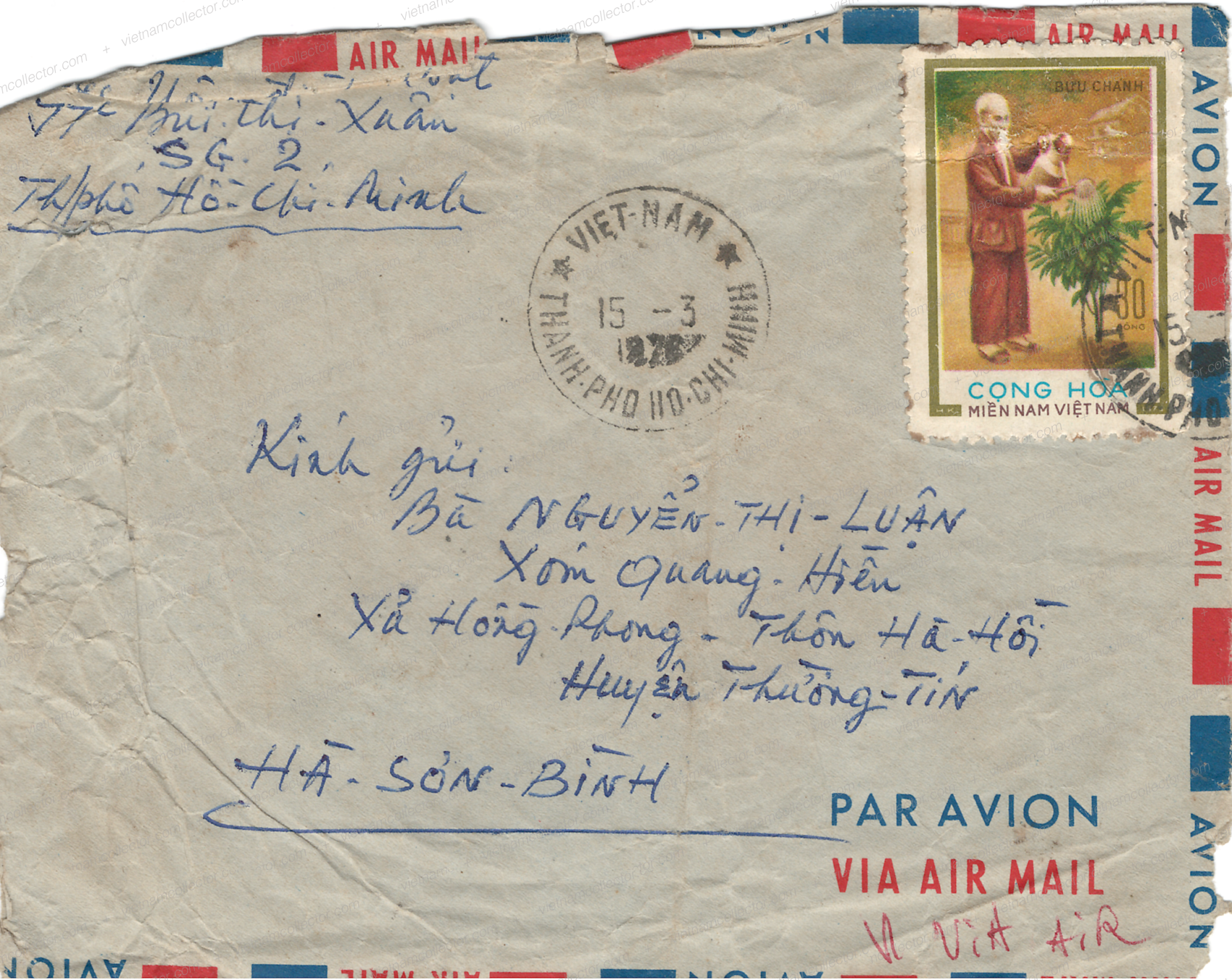
Rare multiple franking of the 30D stamp with the olive-brown frame paying the second weight level letter rate on an air mail letter sent to Gia Dinh. Thanh Pho Ho Chi Minh transit cancels on the reverse. The stamps show a very unusual even perforation that almost looks like mechanically but accurately separated.
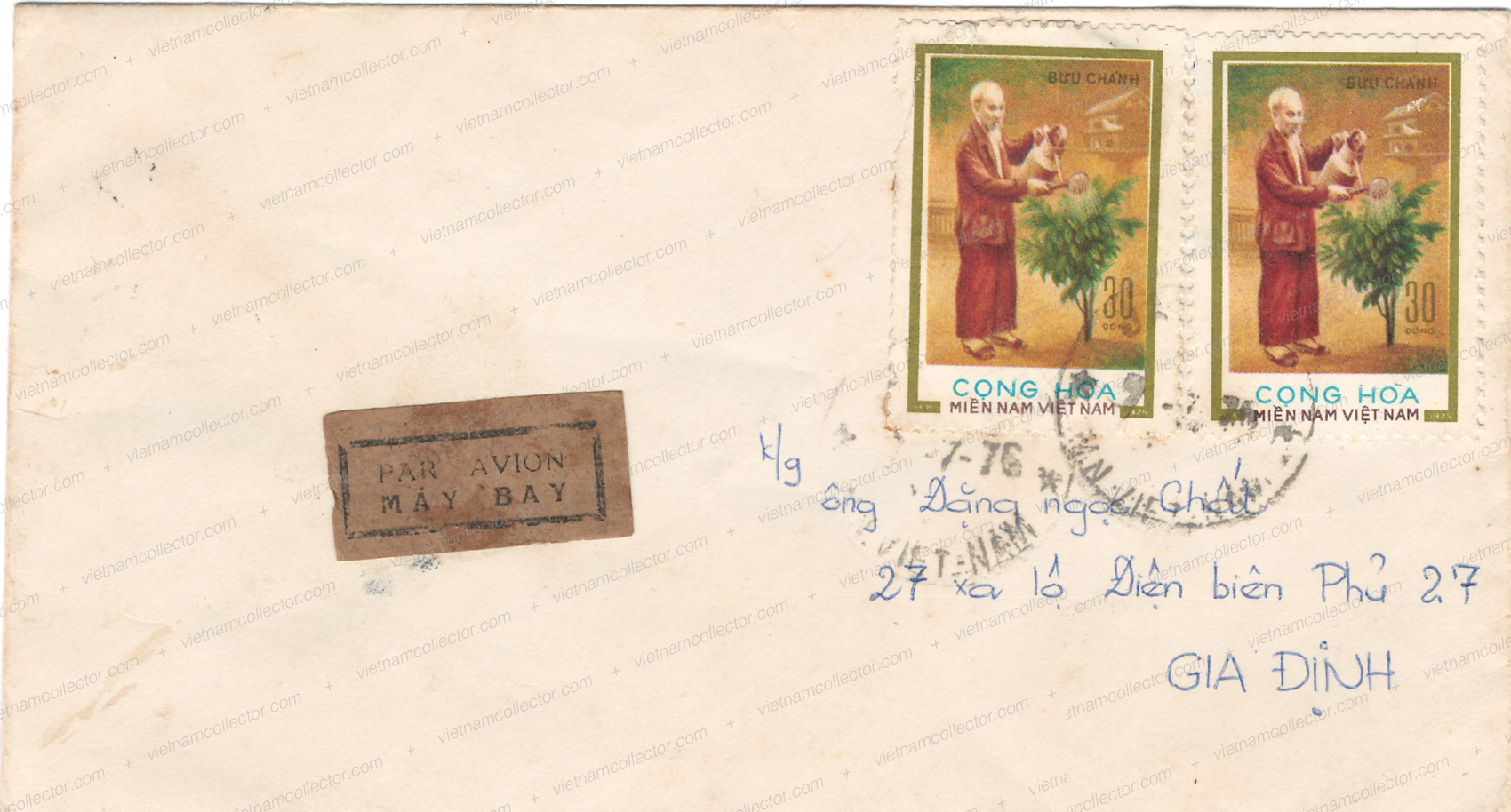
Rare mass franking of the 30D value with the olive-brown frame cut from a large envelope mailed in September of 1975. Unusual “B.P.Ria” hand cancel and Ho Chi Minh City machine arrival cancel from September 26th, 1975.
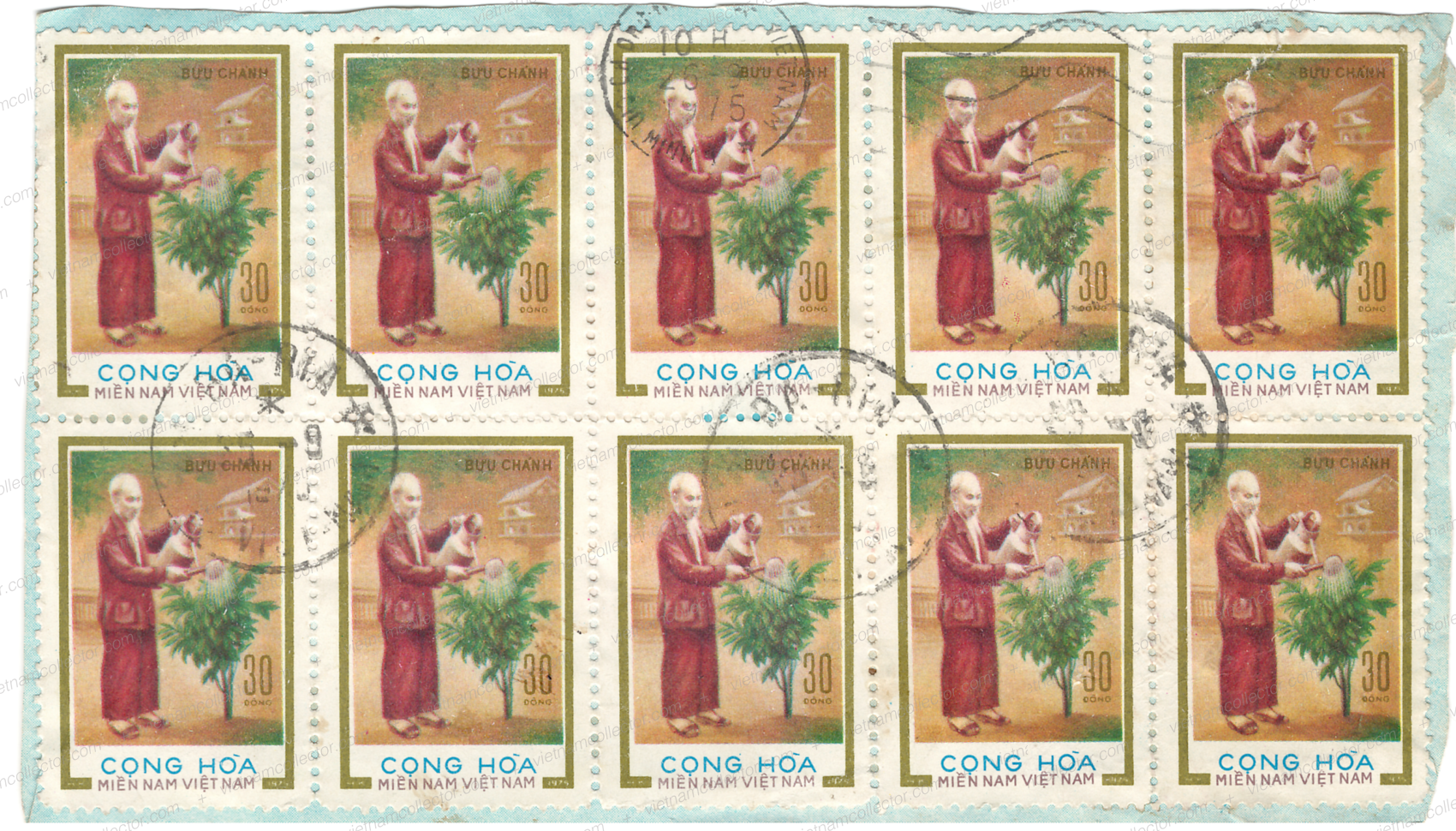
The 10D stamps were overprinted with “30 Dong” in red color in Binh Dinh and Huy Nhon but it appears that all of these provisional stamps were used up and that no mint samples of this overprint exist any longer. At least the editior has never seen genuine overprinted stamps offered in the market place. Also Tha Phi Long’s book “Some features of Postal History in the Period of revolutionary South Vietnam” does not show any mint samples (only a few on cover), so clearly he did not have any mint samples on hand when preparing his book either. Of course this does not prevent forgers from offering counterfeits of the overprints once in a while. Here is such a forged overprint.
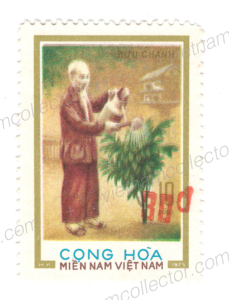
Detailed scan of the forged overprint.
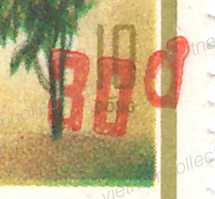
Registration Nr. 200016

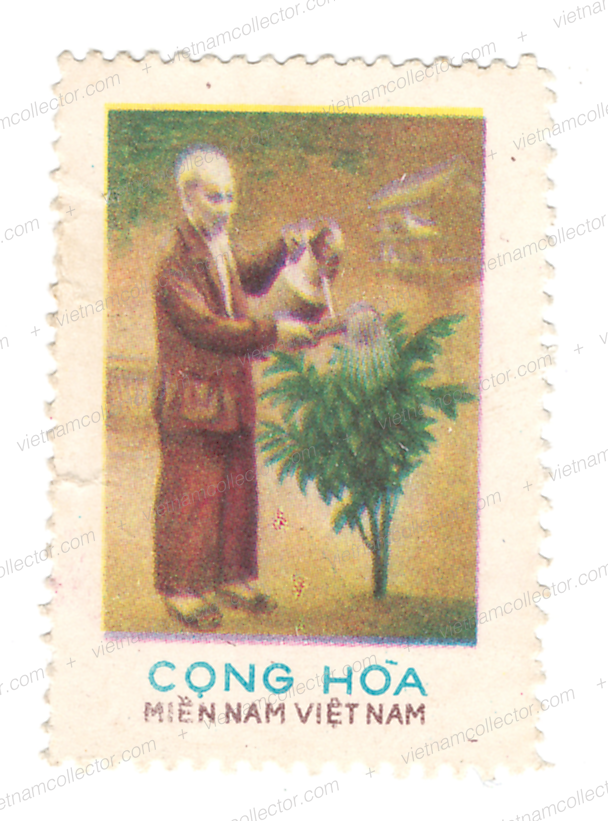
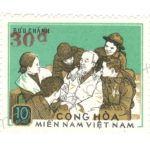
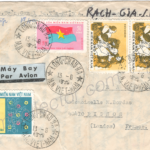
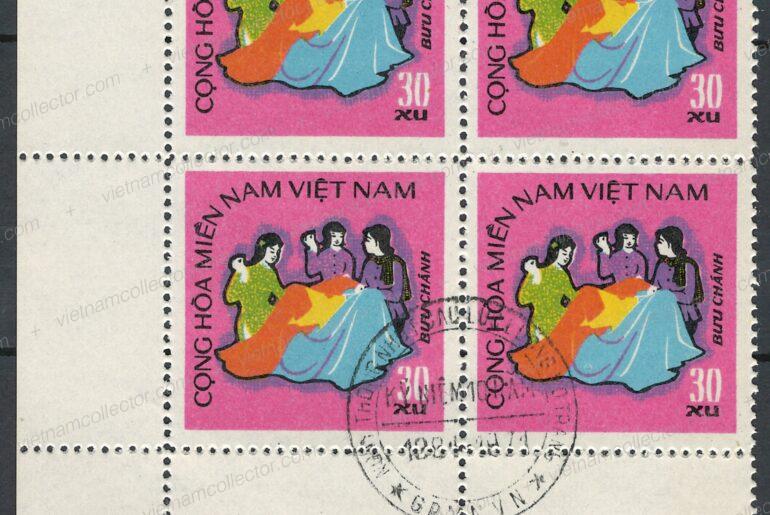
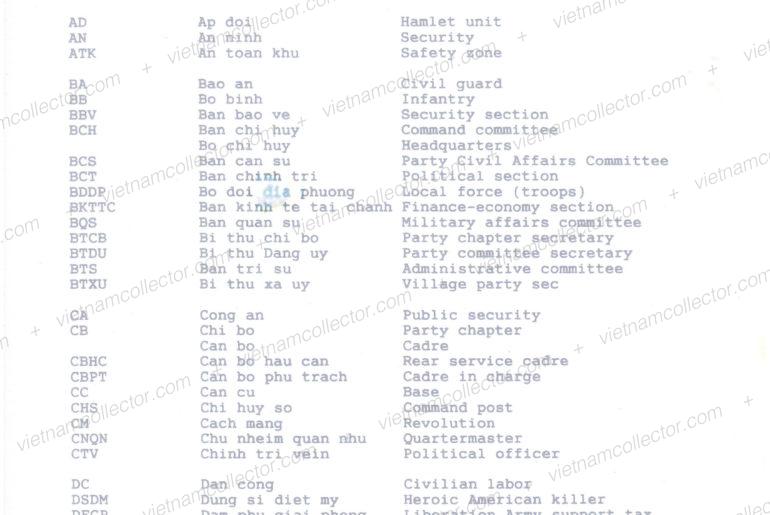
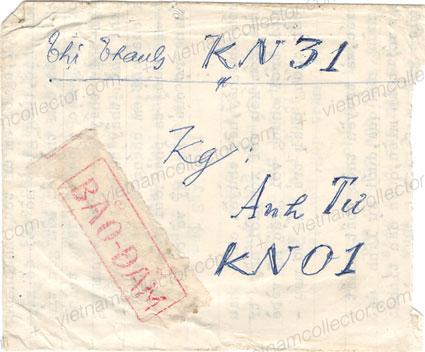
Comments are closed.